The letter A is a common starting point for many animals’ scientific and common names. The first letter of the Alphabet is one of the most common starters for many words.
The animals that begin with A can be found all over the globe. They are categorised into different groups and categories and have plenty of habitual habits.
In this article, you will find a list of 51 different animals that all start with the letter A. These animals come from a variety of different groups and include mammals, birds, reptiles, fish, and invertebrates.
Some of the animals on this list are well-known and commonly kept as pets, while others are more exotic and not as well-known, such as the aardvark or the addax.
No matter what type of animal you’re interested in, there is sure to be something on this list that will pique your curiosity.
List of Animals That Start with A
1. Aardvark
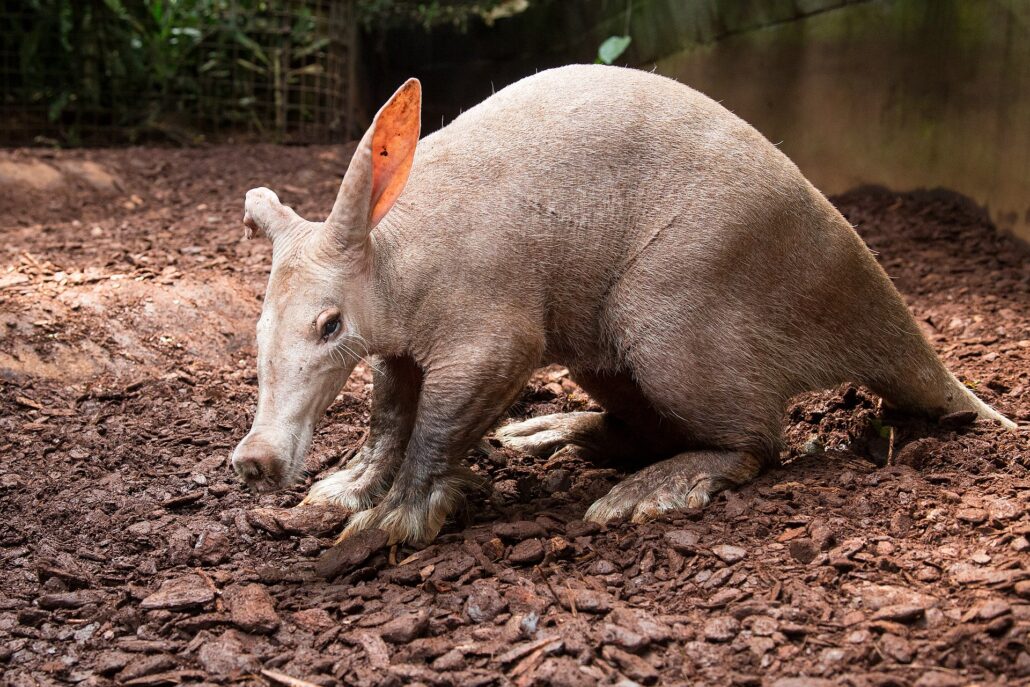
Aardvark is an African native, medium in size and is grouped in the family of mammals. It is the only living species in the order Tubulidentata, which means “tube-toothed.”
Aardvarks have long, pointed noses and long ears, and they are covered in a fuzzy, reddish-brown coat. They have a body length of about 5-7 feet and a weight of around 70-100 pounds.
Aardvarks are nocturnal animals and are known for their powerful digging abilities. They use their strong front claws to dig burrows in the ground, which they use for shelter and to escape predators.
Aardvarks are also excellent swimmers and can hold their breath underwater for up to several minutes.
Aardvarks are eating everything (both plants and animals) and are considered omnivorous.
Their main diet is ants and termites, which they found on the ground while digging. They also eat other insects, as well as fruits and vegetables.
Aardvarks are found throughout sub-Saharan Africa, but their populations have declined in some areas due to habitat loss and hunting.
Unfortunately, the International Union for Conservation of Nature has classified them as a “Near Threatened” species.
2. Addax
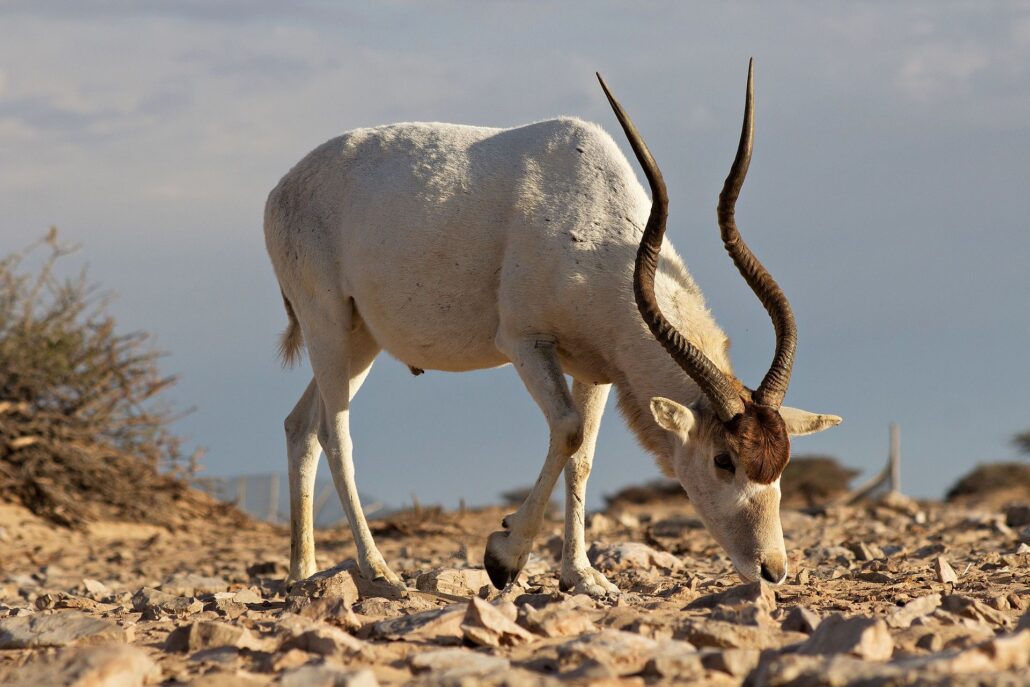
The addax is also known widely known with the name white antelope. It is a large, spiral-horned antelope native to the Sahara Desert in Africa. Addax has an estimated population of fewer than 500 individuals.
Addax can adapt well to every harsh desert environment. They have long, thin legs and wide, flat claw that helps them navigate through the desert sand. Their fur is white or pale grey and helps reflect the extreme desert heat.
Addax is a nomadic animal that travels in small packs to find water and food. They are primarily herbivorous, feeding on grasses and vegetables, but sometimes they also eat insects and other small invertebrates.
Unfortunately, addax is threatened by habitat loss and hunting, and they are protected by international law.
3. Agoutis
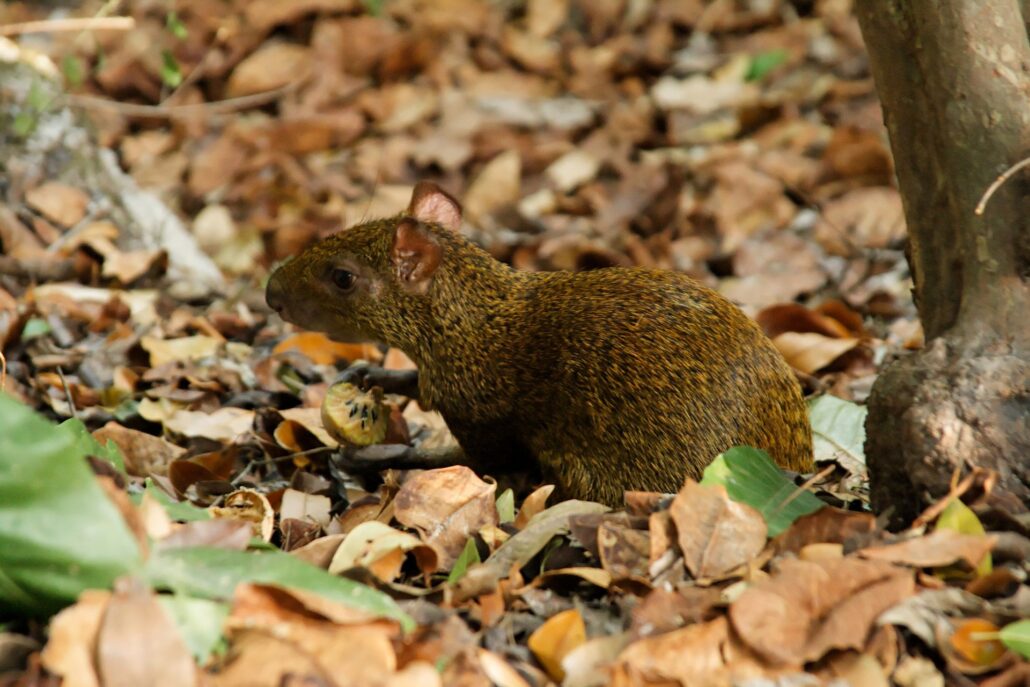
Agoutis are a type of rodent native to Central and South America. They are closely related to guinea pigs and chinchillas and belong to the family Dasyproctidae.
Agoutis have long, slender bodies and bushy tails. They are typically reddish-brown, with a lighter underside. They have large, pointed ears and long, sharp claws that they use for digging and climbing.
Agoutis are primarily herbivorous, feeding on a variety of plants, including fruits, nuts, seeds, and roots. They are quite skilled at biting through tough shells and can open hard-shelled nuts with their strong teeth.
Agoutis are living in a variety of habitats, including rainforests, savannas, and deciduous forests. They are social animals and live in small groups of up to a dozen individuals. They are generally shy and prefer to escape from predators rather than fight.
4. Albatrosses
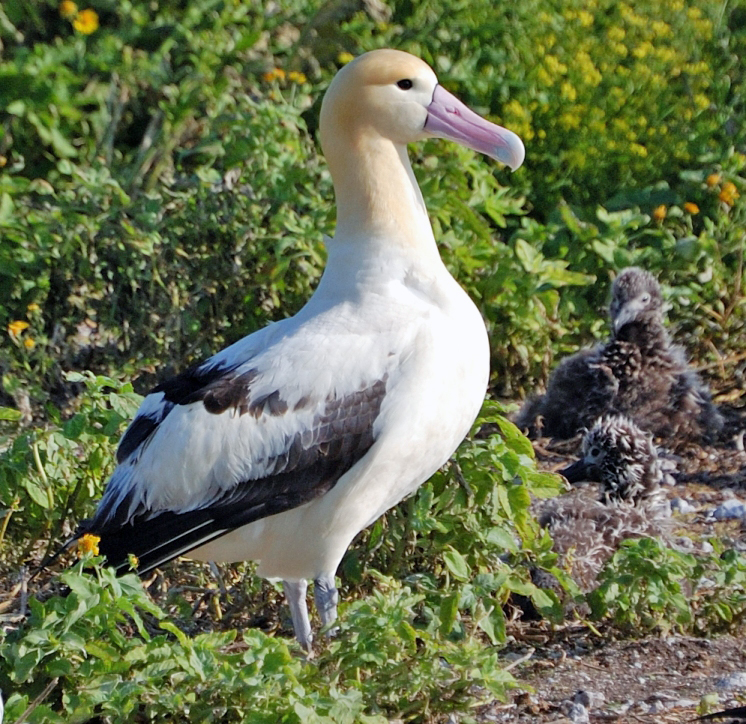
Albatrosses are a group of large, seabird species found in the Southern Ocean and the North Pacific Ocean.
They are known for their long wingspans, which can reach up to 12 feet and their ability to fly long distances without flapping their wings.
Albatrosses have a wingspan of around 10 feet, which is larger than that of any other bird.
Albatrosses are pelagic birds, and they spend most of their time out at sea, only coming ashore to breed.
They are skilled at riding the wind and can travel great distances without expending much energy. They are also excellent swimmers and divers, and they use their long, sharp beaks to catch fish, squid, and other marine animals.
There are 21 species of albatross, and they come in a variety of colours, including white, black, and grey.
They are found on remote islands in the Southern Ocean and the North Pacific Ocean, including the Galapagos Islands, Hawaii, and the Falkland Islands. Albatrosses are long-lived birds and can live for up to 50 years in the wild.
5. Alligators
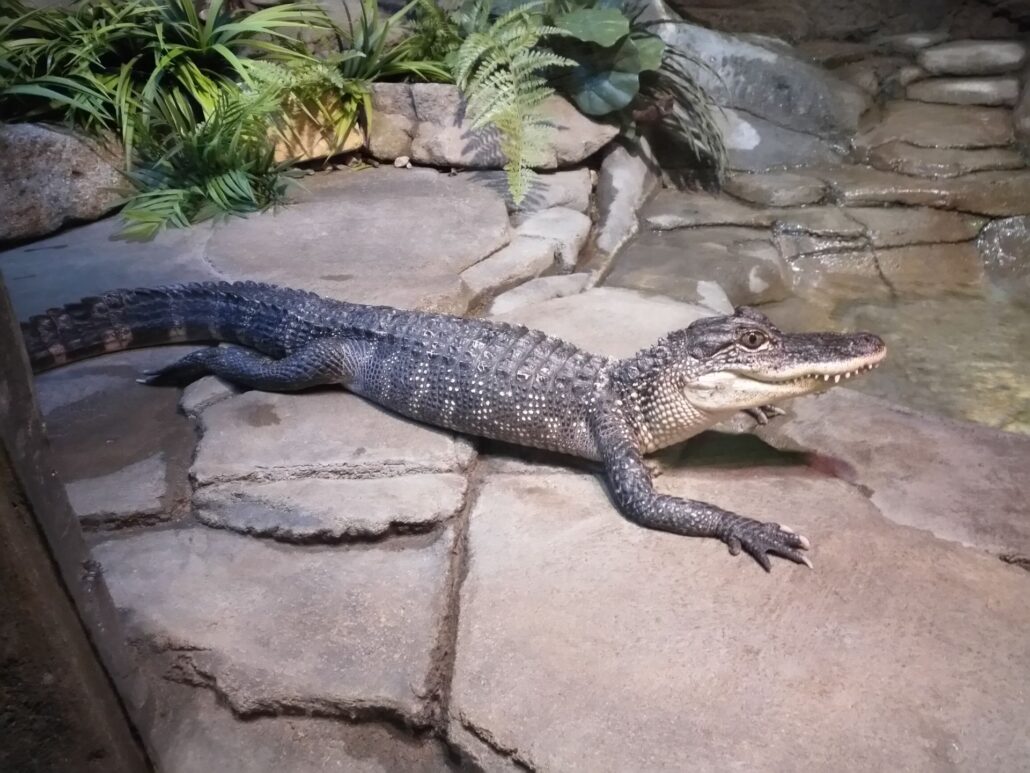
Alligators are large, semi-aquatic reptiles native to the south-eastern United States and China. It is worth mentioning that they mostly inhibit wetlands, marshes, and swamps.
They are closely related to crocodiles and belong to the family Alligatoridae.
Alligators have long, heavy bodies, short, muscular tails, and wide, flat heads with powerful jaws. They have tough, scaly skin that is greenish-brown in colour and a row of bony plates running down their backs.
Adult alligators can grow up to 15 feet in length and weigh over 1,000 pounds.
Alligators are carnivorous and will eat a variety of prey, including fish, birds, mammals, and other reptiles.
They are one of the most powerful hunters in the animal kingdom and they use their massive jaws to catch their prey.
6. Alpaca
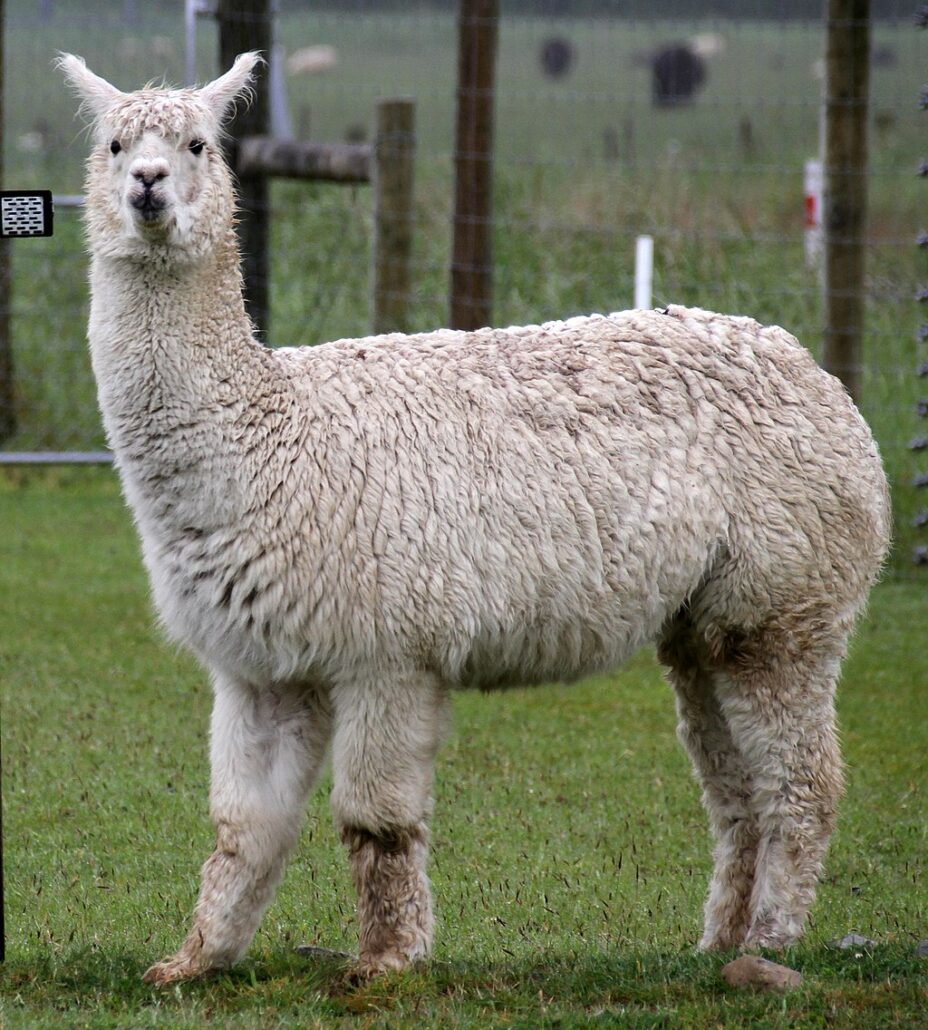
Alpacas are domesticated animals native to South America. They are generally found in the highlands of Peru, Bolivia, and Chile.
They are closely related to llamas and belong to the camelid family, which also includes camels and vicunas.
Alpacas have small, stocky bodies with long, thin legs and long, pointed heads. They have soft, fluffy fibre that grows on their body, which is used to make clothing and other textiles.
Alpacas come in a variety of colours, including white, brown, black, and grey.
Alpacas are herbivorous and primarily graze on grasses and other vegetation.
They are known for their gentle disposition and are often kept as pets or used for livestock. Alpacas are generally hardy animals and have a lifespan of around 20 years.
7. Amoebas
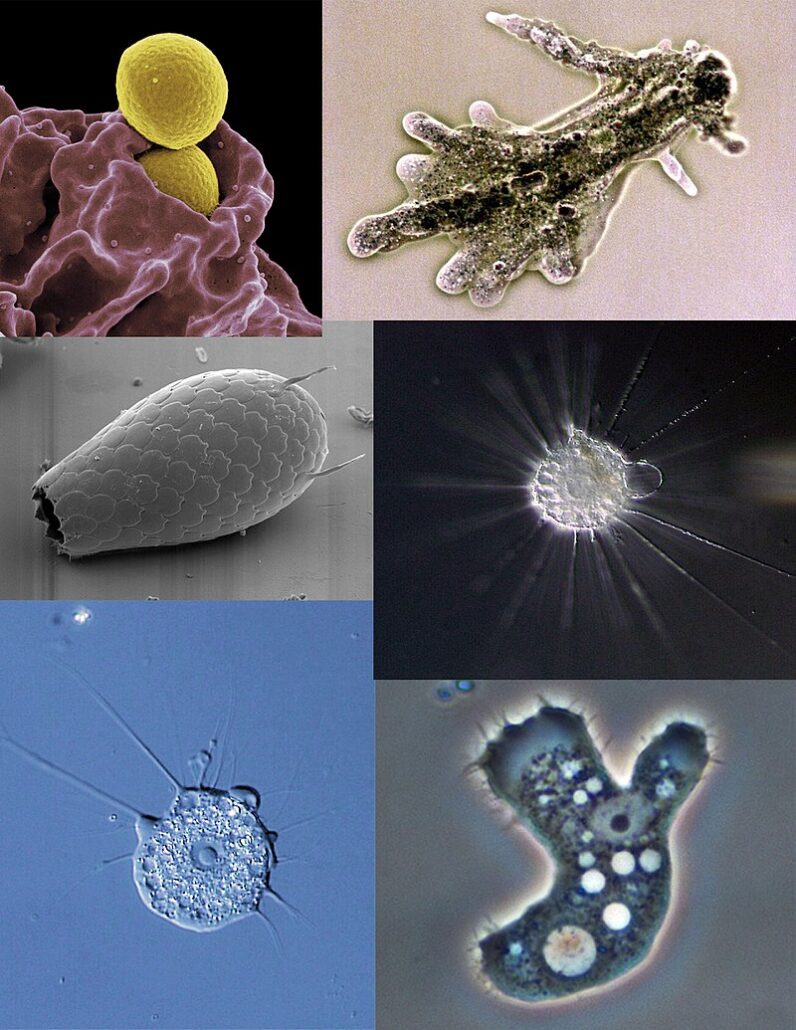
Amoebas are single-celled, heterotrophic organisms that belong to the kingdom Protista. They are found in a variety of environments, including freshwater, saltwater, and soil.
Amoebas are known for their ability to change shape and move using a process called amoeboid movement.
They have a single, central nucleus and a cell membrane that surrounds their body. Amoebas move by extending a part of their cell membrane and flowing into the newly created space.
Amoebas are heterotrophic, meaning they cannot produce their own food and must consume other organisms for energy.
They are opportunistic feeders and will consume a variety of prey, including bacteria, algae, and other small organisms.
There are many different species of amoebas, and they vary in size, shape, and colour.
Some species are free-living and found in natural habitats, while others are parasites that infect other organisms. Amoebas are important components of many ecosystems and play a role in the cycling of nutrients.
8. Anacondas
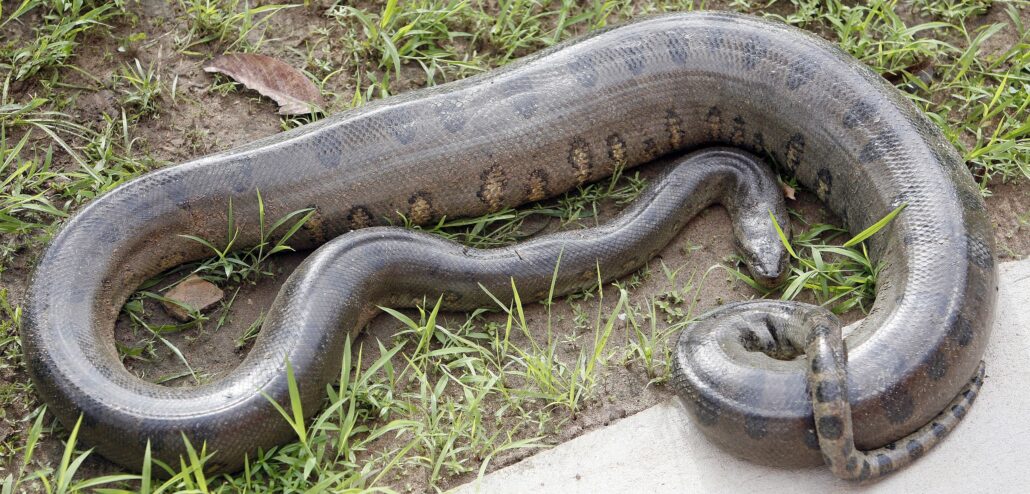
Anacondas are snakes native to South America. They are considered non-venomous snakes, and they are one of the largest types of snakes in the world.
They are members of the boa constrictor family and are known for their powerful muscles and ability to squeeze their prey to death.
Anacondas are found in a variety of habitats, including rainforests, swamps, and rivers, and they can grow up to 29 feet in length and weigh over 500 pounds.
They are carnivorous and will eat a variety of prey, including fish, birds, mammals, and other reptiles.
9. Anoles
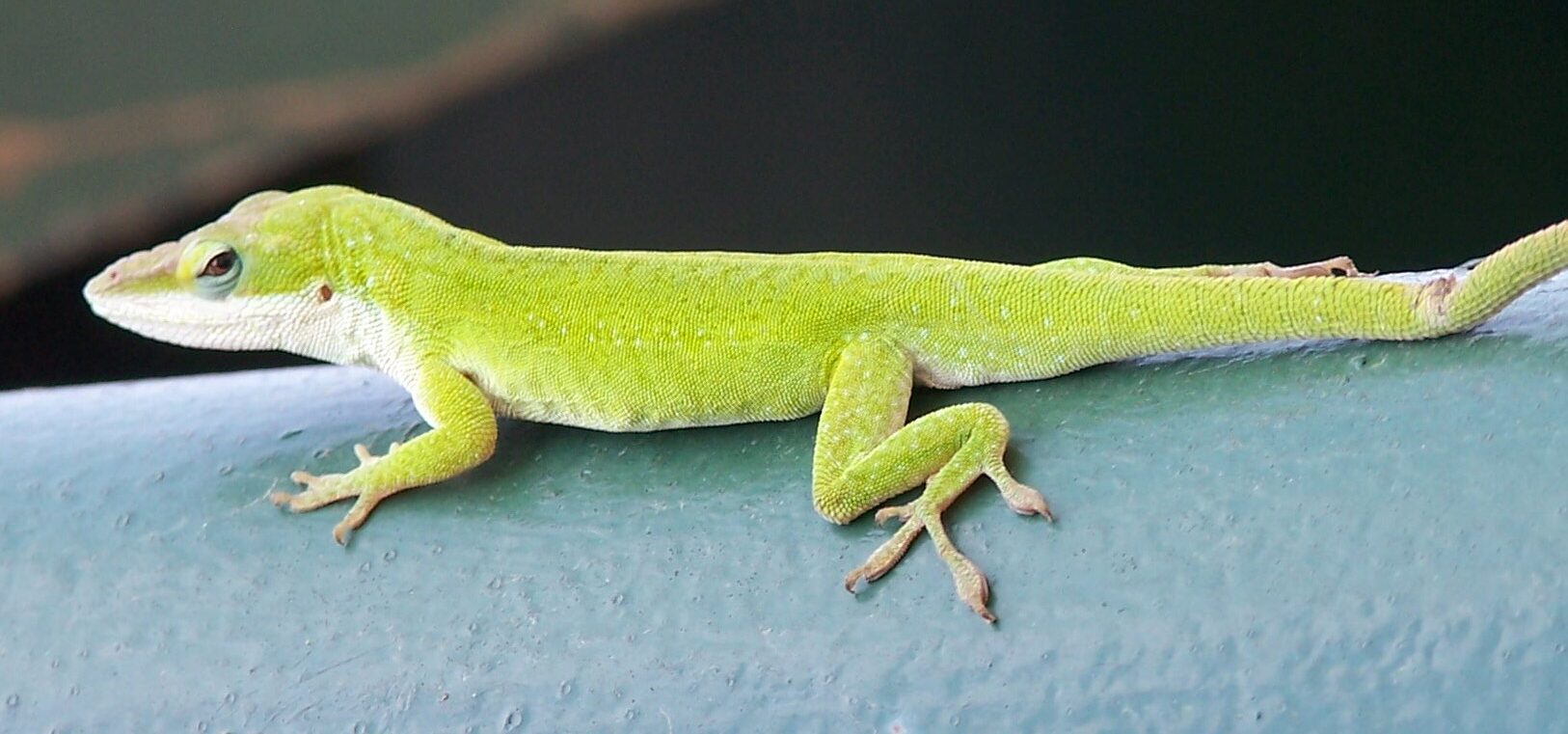
Anoles are a type of small, arboreal lizard native to the Caribbean and Central and South America. They are known for their ability to change colour, which they use for communication and camouflage.
Anoles have a long, slender body, a pointed head, and a long, whip-like tail. They are generally green or brown, but some species can turn pink, red, or orange. Anoles are insectivorous and will eat a variety of insects and other invertebrates.
10. Ants
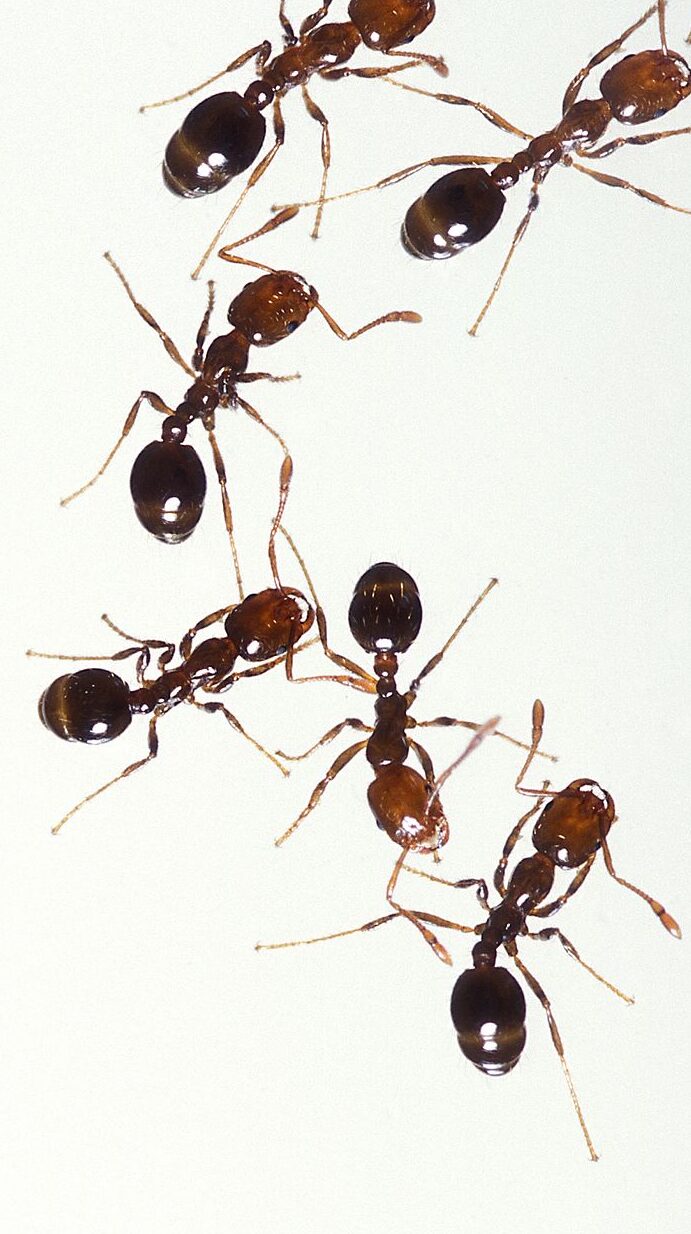
Ants are a type of social insect found in a variety of environments around the world. They are known for their organized colonies and complex social structures.
Ants have small, slender bodies, pointed heads, and a pair of elbowed antennae. They are generally black, brown, or red, and they range in size from a few millimetres to over an inch in length.
Ants are omnivorous and will eat a variety of plants and animals, as well as scavenge for food.
11. Anteaters
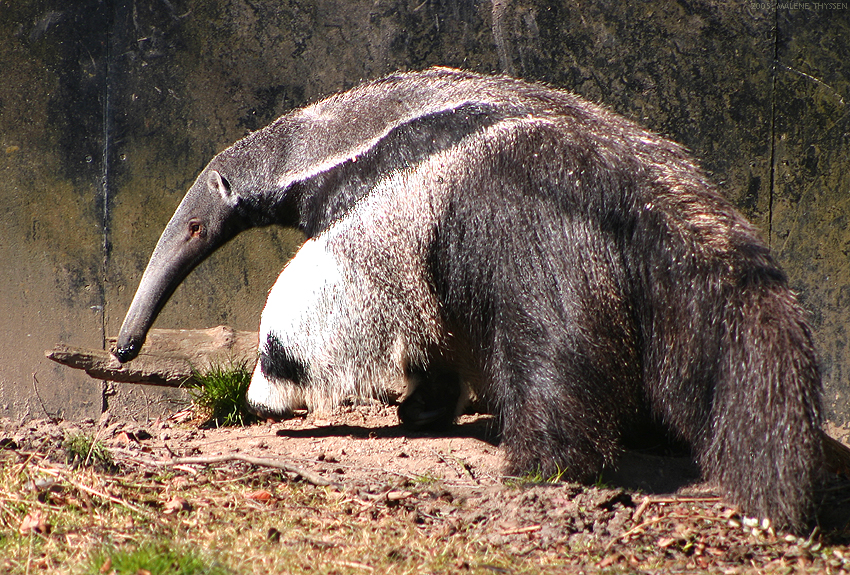
Anteaters are a group of mammals native to Central and South America. They are known for their long, narrow snouts and sticky tongues, which they use to capture and eat ants and termites.
Anteaters have long, slender bodies, small heads, and long, bushy tails. They are generally brown or grey in colour and have a body length of up to 7 feet.
Anteaters are found in a variety of habitats, including rainforests, savannas, and grasslands.
12. Antelopes
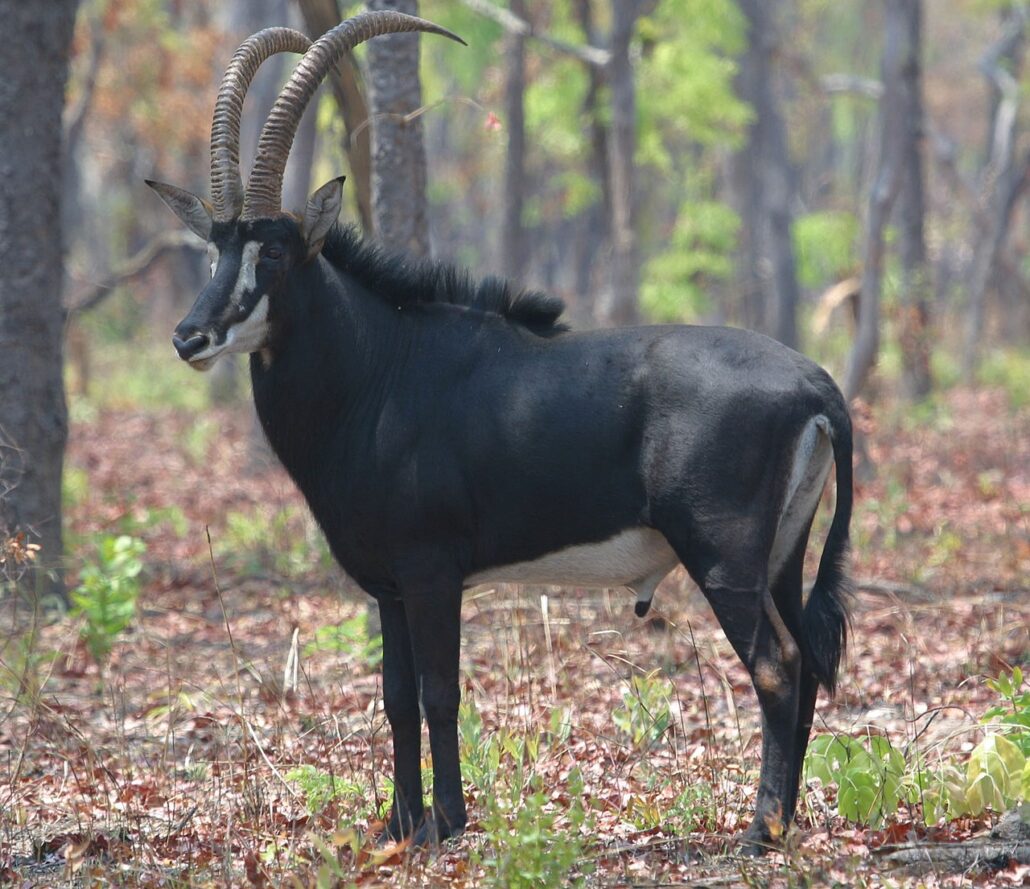
Antelopes are a group of hoofed mammals native to Africa and Asia. They are known for their long, slender legs and horns, which are used for defence and for battling other males for territory and mates.
Antelopes come in a variety of shapes and sizes and are generally brown, grey, or black. They are herbivorous and will graze on grasses and other vegetation.
Antelopes are found in a variety of habitats, including savannas, grasslands, and forests.
13. Apes
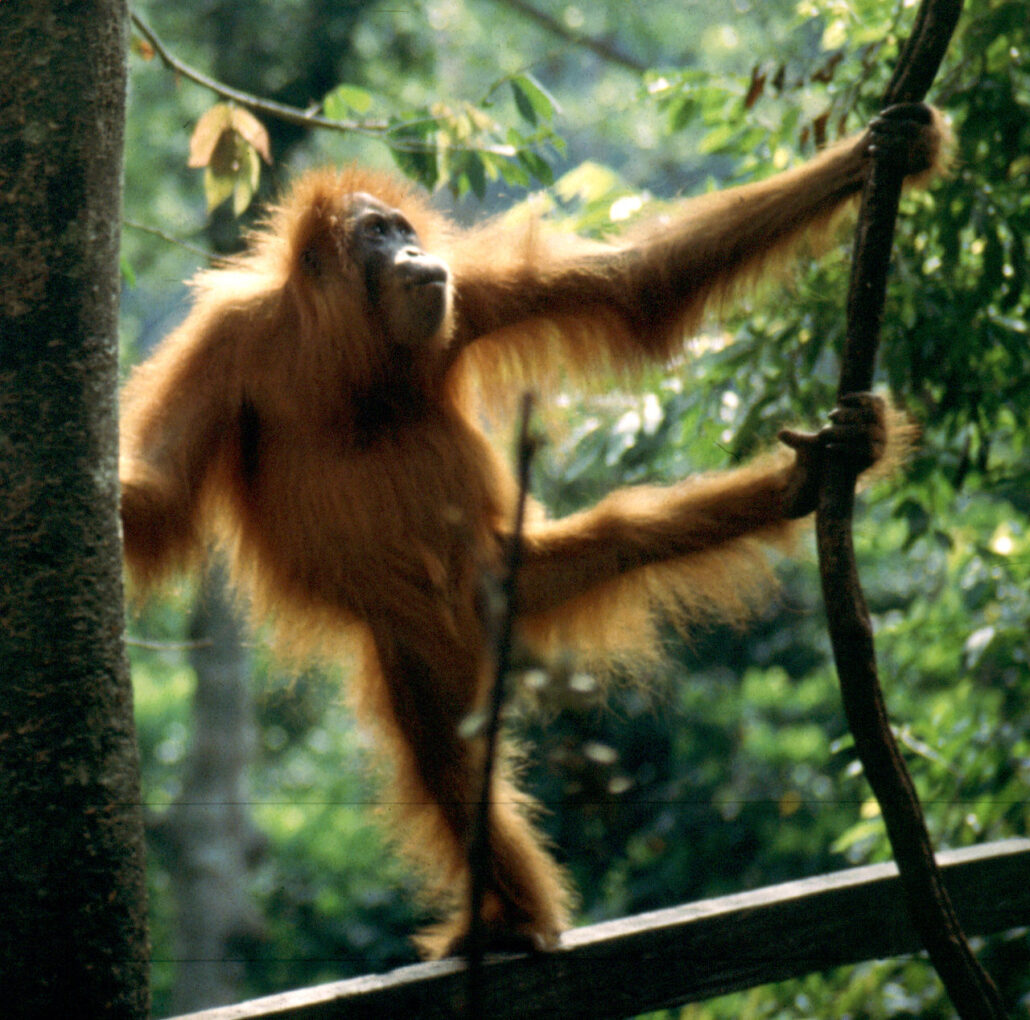
Apes are a group of intelligent, tailless primates found in a variety of habitats in Africa, Asia, and South America.
They are closely related to humans and are known for their large brains and complex social structures.
Apes include gorillas, chimpanzees, orangutans, bonobos, and gibbons. They are generally larger and more muscular than monkeys and have longer arms and more agile fingers. Apes are omnivorous and will eat a variety of plants and animals.
14. Αplomado Falcon

The aplomado falcon is a medium-sized bird of prey found in the Americas. It has a long, slender body, a pointed head, and long, narrow wings.
The aplomado falcon is generally grey or brown in colour, with dark markings on its wings and tail.
It is an agile flyer and is known for its speed and hunting ability. The aplomado falcon feeds on small mammals, birds, and reptiles.
15. Arctic Fox

The Arctic fox is a small, carnivorous mammal found in the Arctic regions of North America and Eurasia. It has a thick, white coat that helps it blend in with its snowy surroundings and provides insulation against the cold.
The Arctic fox has a short, rounded body, a small head, and a bushy tail. It has sharp teeth and claws, which it uses to catch and eat small animals, such as lemmings and voles.
16. Arctic Hare

The Arctic hare is a medium-sized, herbivorous mammal found in the Arctic tundra of North America and Greenland. It has a dense coat of white colour.
This coat helps it mix with its snowy surroundings and protects it from cold weather.
The Arctic hare has long, pointed ears and long, powerful hind legs that it uses for hopping and running.
It feeds on grasses, lichens, and other vegetation and is an important food source for predators such as foxes and wolves.
17. Arctic Wolf
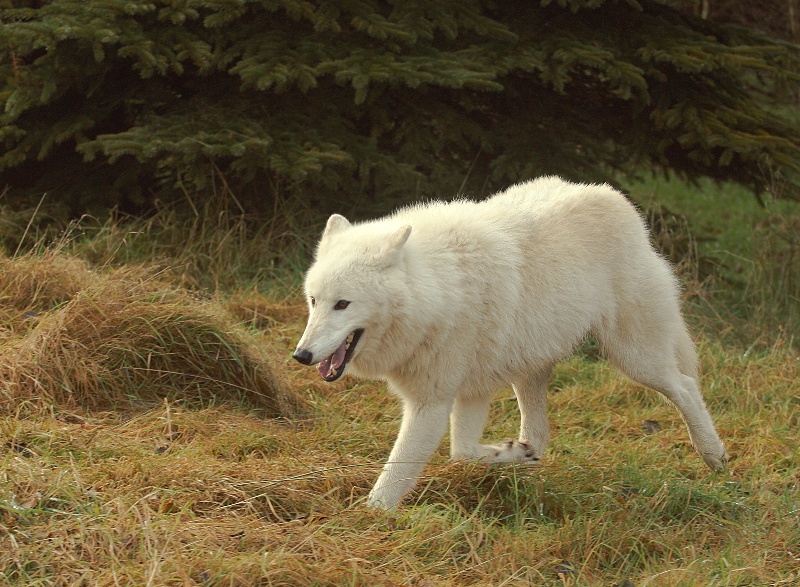
The Arctic wolf is a subspecies of the grey wolf found in the Arctic regions of North America and Greenland. The white coat helps it mix up with the snow and gives it great protection from the cold.
The Arctic wolf has a large, muscular body, a long, pointed head, and a bushy tail.
It is a carnivorous predator and feeds on a variety of animals, including caribou, muskoxen, and small mammals.
18. Armadillos
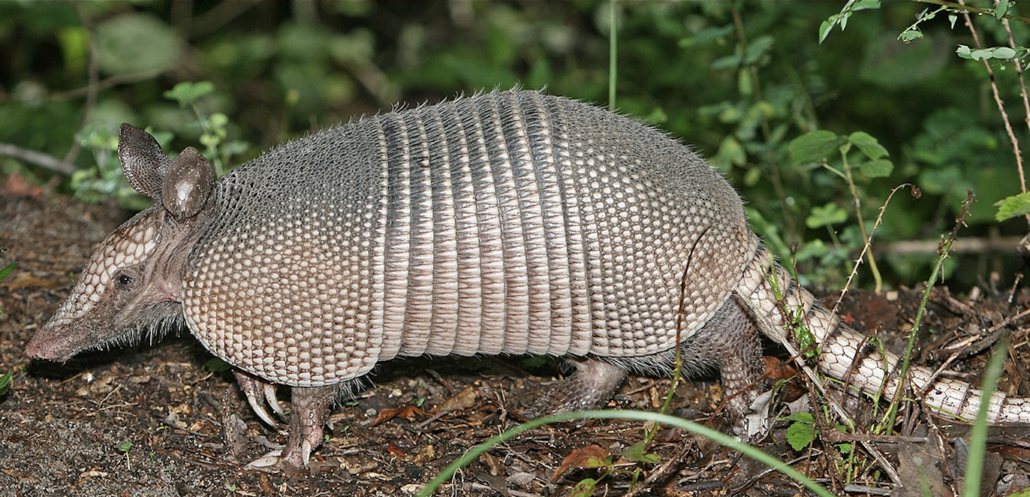
Armadillos belong to the mammal group and can be found in the Americas. They are known for their tough, scaly armour, which covers their body and protects them from predators.
Armadillos have a small, stocky body, a short, pointed head, and short, powerful legs.
They are generally brown or grey in colour and have a body length of up to 3 feet. Armadillos are omnivorous and will eat a variety of plants and animals.
19. Asps
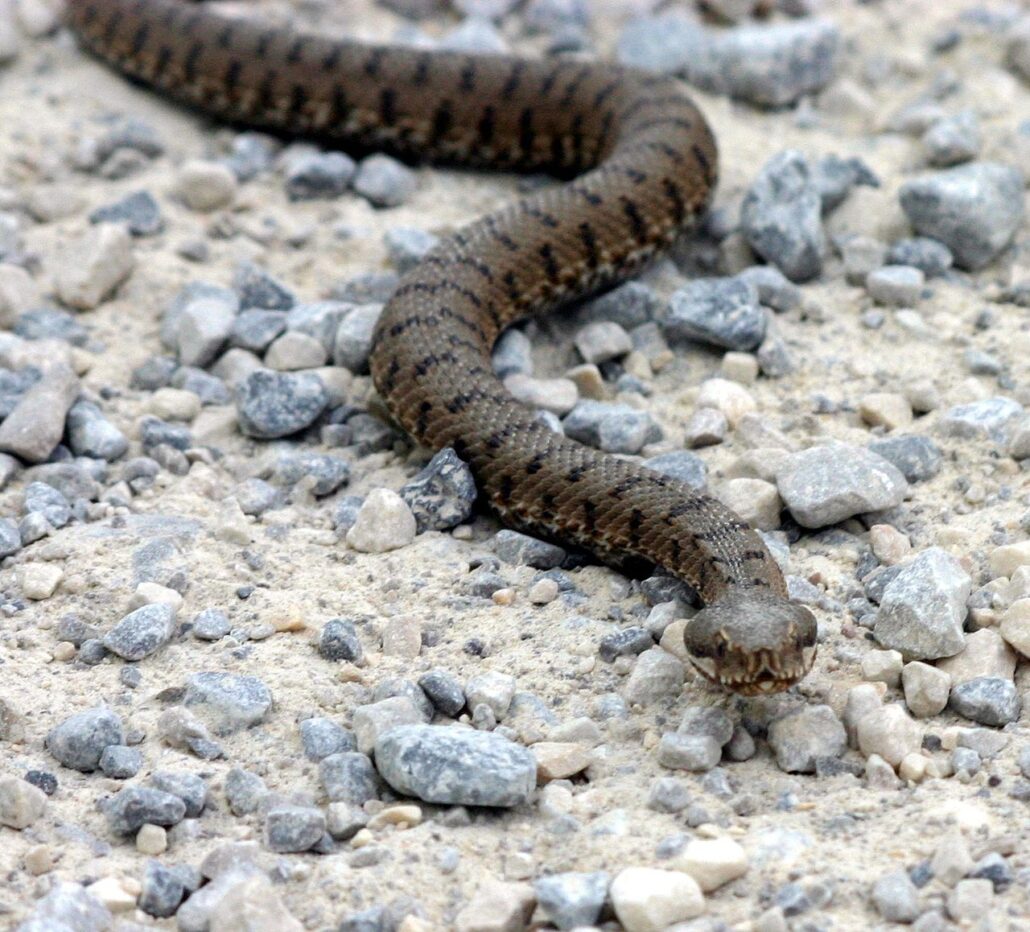
Asps are a group of venomous snakes found in Africa, Asia, and Europe.
They are members of the viper family and are known for their long, slender bodies and long, hinged fangs that they use to inject venom into their prey.
Asps come in a variety of colours, including brown, green, and yellow, and they range in size from a few inches to over 6 feet in length. Asps are carnivorous and will eat a variety of small mammals, birds, and reptiles.
20. Anglerfish
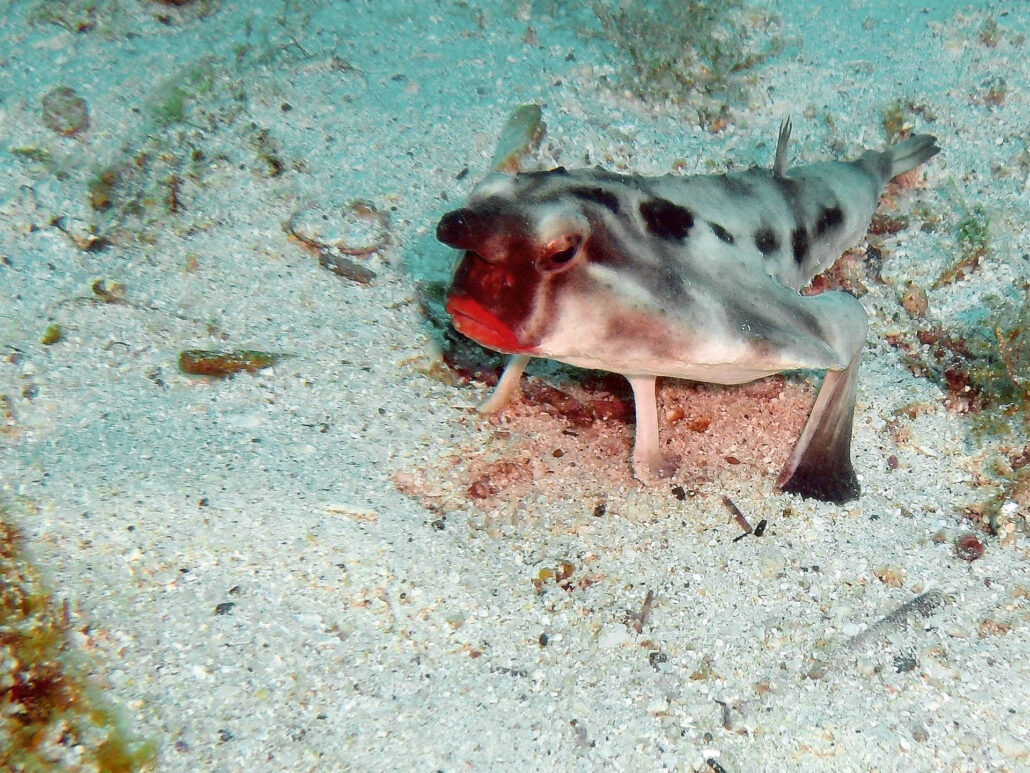
Anglerfish are a type of fish that are known for their distinctive method of hunting prey.
They are named for the long, slender “angler” protrusion that extends from their heads and ends in a bulbous lure.
This lure is used to attract small fish and other prey, which the anglerfish then captures with its sharp teeth.
Anglerfish are found in the deep waters of the Atlantic, Pacific, and Indian Oceans. They are typically small, ranging in size from a few inches to about a foot in length.
Many species of anglerfish have a distinctive appearance, with large heads and mouths, and long, spiky fins.
Some species are also known for their ability to produce light, using organs called photophores that are located on their bodies.
Anglerfish have several adaptations that allow them to survive in the deep sea, where light levels are low and food is scarce.
They can generate heat to keep their bodies warm in cold water, and they have a highly efficient system for extracting oxygen from the water.
Anglerfish are also known for their ability to go long periods without eating, thanks to their ability to store energy in the form of fat.
21. Aardwolf
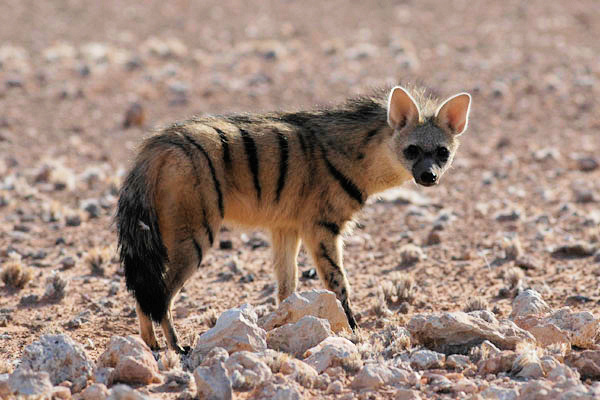
The aardwolf is a small, carnivorous mammal found in Africa. It is closely related to hyenas and belongs to the same family, Hyaenidae.
The aardwolf has a small, slender body, a short, pointed head, and a long, bushy tail. It is generally yellowish-brown in colour and has a body length of up to 3.5 feet.
The aardwolf feeds mainly on insects, especially termites, and is known for its powerful jaws and sharp teeth.
22. Asian Elephant
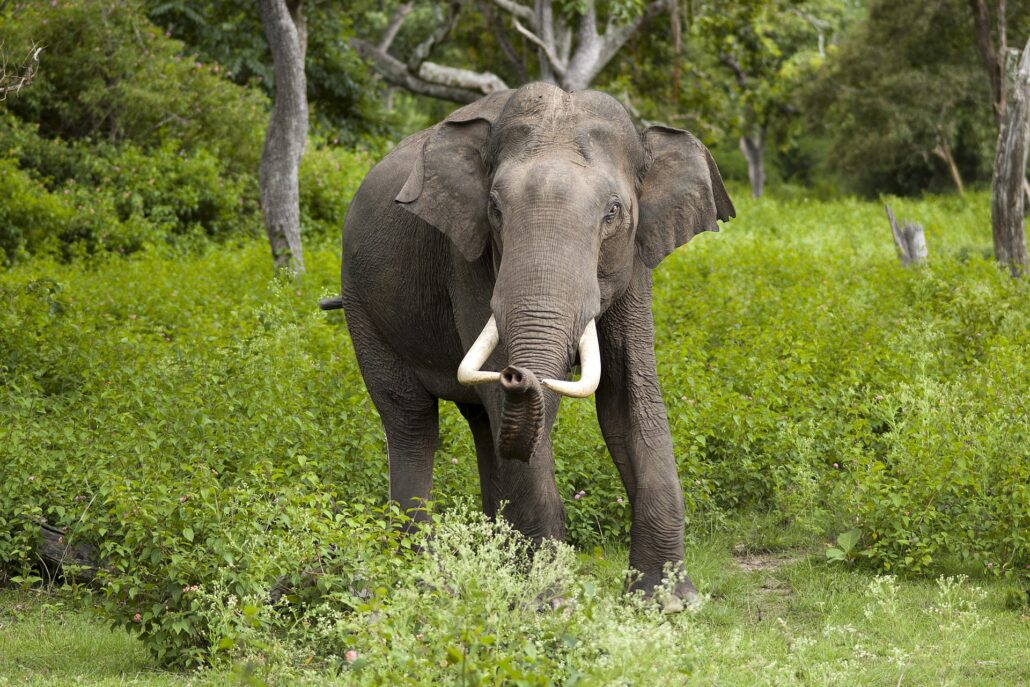
The Asian elephant is a large, herbivorous mammal found in a variety of habitats in Asia, including rainforests, grasslands, and forests.
It has a large, bulky body, a short, rounded head, and a long, flexible trunk that it uses for communication, grasping and feeding.
Asian elephants have grey skin and long, curved tusks, which they use for digging and foraging. They are social animals and live in herds led by a dominant female.
23. Abyssinian
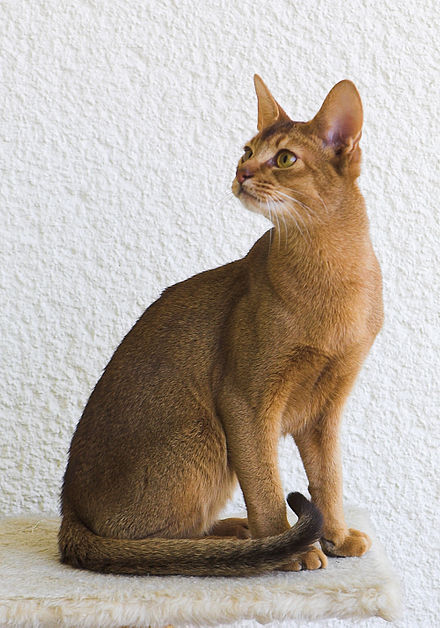
The Abyssinian is a breed of domestic cat known for its long, thin body, sleek coat, and distinctive ticked fur.
It is named after the ancient kingdom of Abyssinia (now Ethiopia), and it is believed to be one of the oldest cat breeds.
Abyssinians are intelligent, energetic, and playful, and they are known for their affectionate nature. They come in a variety of colours, including red, ruddy, fawn, and blue.
24. Adelie Penguin
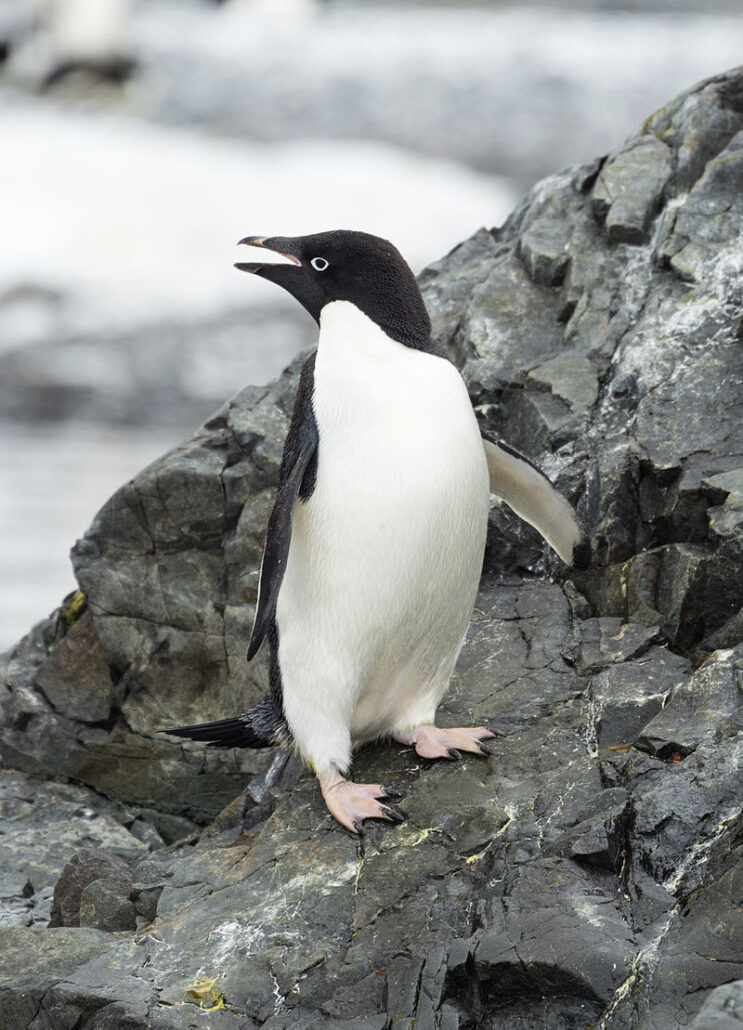
The Adélie penguin is a medium-sized, flightless bird found in Antarctica and the surrounding islands. It has a small, stocky body, a short, pointed head, and a distinctive white ring around its eyes.
Adélie penguins are black on the top and white on the bottom, with a small patch of bare skin on their face and neck.
They are excellent swimmers and divers and feed on a variety of small fish and krill.
Adélie penguins are social animals and live in large colonies called rookeries.
They are known for their elaborate courtship rituals, which involve vocalizations and displays of their feathers.
Adélie penguins are also known for their strong parental instincts and will care for their chicks until they are old enough to fend for themselves.
25. African Civet

The African civet is a medium-sized, carnivorous mammal found in a variety of habitats in Africa, including rainforests, grasslands, and forests. It has a long, slender body, a small head, and a long, bushy tail.
African civets are generally brown or grey, with distinctive black and white markings on their face and tail.
They are nocturnal animals and are known for their strong, musky smell, which they use to mark their territory. African civets are omnivorous and will eat a variety of plants and animals.
26. African Clawed Frog

The African clawed frog is a small, aquatic frog native to Africa. It is named for the sharp claws on its hind feet, which it uses to climb and defend itself.
The African-clawed frog has a small, stocky body, a flat head, and smooth skin. It is generally brown, green, or black in colour, with a dark stripe running down its back.
African clawed frogs are found in a variety of freshwater habitats, including streams, ponds, and swamps. They are omnivorous and will eat a variety of small animals, such as insects and worms, as well as plants.
27. Aidi
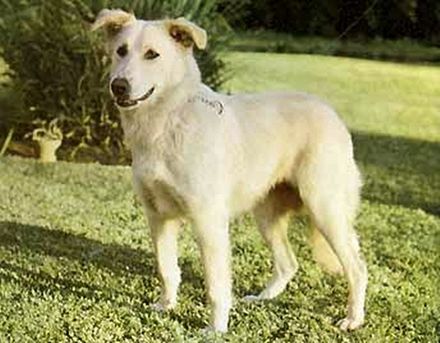
The Aidi is a breed of dog native to the Atlas Mountains in Morocco. It is a medium-sized, muscular dog with a thick, woolly coat, which is typically white or cream in colour.
The Aidi has a long, pointed head, pointed ears, and a long, fluffy tail. It is an intelligent, alert, and energetic breed and is often used as a guard dog and for hunting.
28. Airedale Terrier
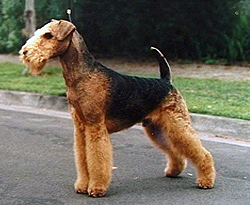
The Airedale terrier is a breed of terrier native to the Aire Valley in Yorkshire, England. It is the largest of the terrier breeds and is known for its wiry, black and tan coat, which is resistant to weather and dirt.
The Airedale terrier has a long, muscular body, a long, pointed head, and small, triangular ears. It is a smart, observant, and active breed and is also used as a hunting dog.
Airedale terriers are known for their strong will and independent nature. They are energetic and need plenty of exercises and mental stimulation to stay happy and healthy.
They are also intelligent and can be trained to perform a variety of tasks. Airedale terriers are generally good with children and other pets and make loyal, affectionate companions. They have a lifespan of around 10-13 years.
Unfortunately, Airedale terriers are prone to certain health problems, including hip dysplasia, eye problems, and skin allergies.
They may also be prone to barking and can be stubborn when training. Proper socialization and training are important to prevent behaviour problems.
29. Akbash
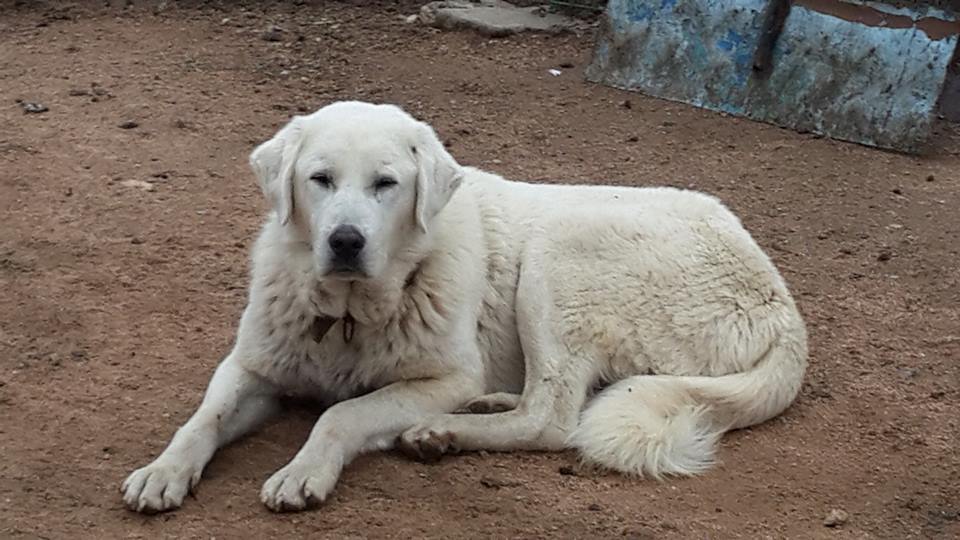
The Akbash is a breed of dog native to Turkey. It is a large, muscular breed with a white, short- to medium-length coat. The Akbash has a long, pointed head, small, triangular ears, and a long, fluffy tail.
It is a clever, cautious, and autonomous breed. Akbash dogs are good family dogs as they are coming along with both children and pets. They usually live around 10-12 years.
These puppies are loyal, alert, and intelligent, which are some of the best qualities you can ask for.
30. Albacore Tuna
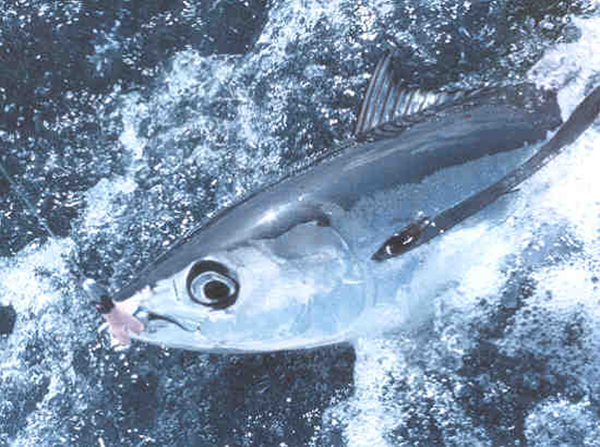
Albacore tuna (Thunnus alalunga) is a species of tuna found in the open waters of the Atlantic, Pacific, and Indian Oceans. It is a fast-swimming, predatory fish that is known for its long, slim body, sharp teeth, and retractable fins.
Albacore tuna can grow up to 6 feet in length and weigh up to 200 pounds.
Albacore tuna are generally blue-black on the top and silver on the bottom, with a distinctive white stripe running along their sides.
They are found in a variety of marine environments, including the open ocean, coastal waters, and near underwater structures. Albacore tuna are opportunistic feeders and will eat a variety of small fish, squid, and crustaceans.
31. Alusky
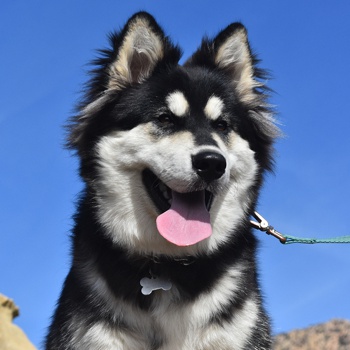
The Alusky is a hybrid breed of dog created by crossing an Alaskan malamute with a Siberian husky. It is a large, athletic breed with a thick, double coat, which can be any colour.
The Alusky has a long, narrow head, small, triangular ears, and a thick, bushy tail. It is a brilliant, active, and playful breed and is mostly used as a companion dog.
32. Amazon Parrot
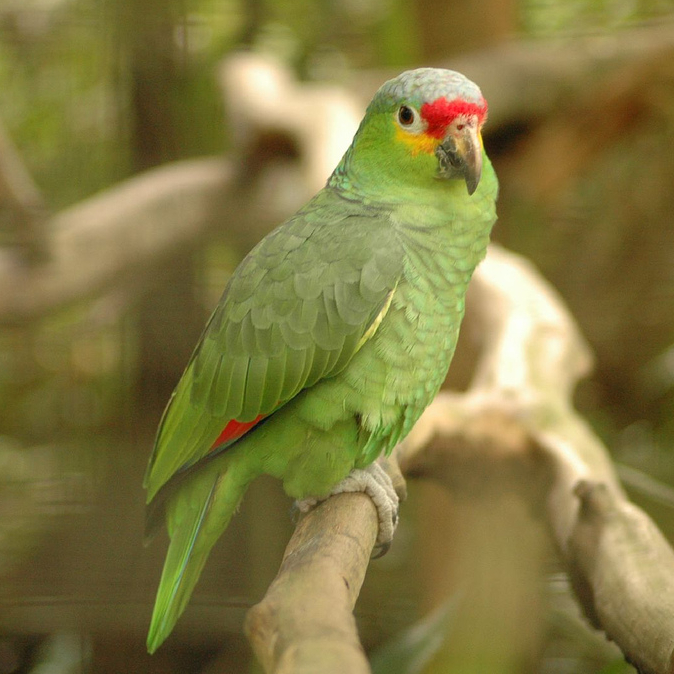
The Amazon parrot is a group of tropical parrots found in the rainforests of Central and South America.
They are medium to large-sized birds with bright, colourful plumage, long, pointed tails, and strong, curved beaks.
A common characteristic of Amazon parrots is their intelligence and the ability to mimic the sounds of humans. They are popular as pets and are often kept in aviaries or as house pets.
33. Ambrosia Beetle

Αmbrosia beetle is a group of small, wood-boring beetles found in a variety of habitats around the world. They are named for the symbiotic fungi that they cultivate in the galleries that they bore into living trees.
The fungi produce a nutritious substance called ambrosia, which the beetles and their larvae feed on.
Ambrosia beetles are known for their ability to kill trees by introducing fungi into the wood, which can lead to fungal rot and decay.
34. American Bulldog

The American bulldog is a breed of domestic dog developed in the United States. It is a large, muscular breed with a short, smooth coat, which is typically white, brindle, or red in colour.
The American bulldog has a large, blocky head, small, triangular ears, and a thick, powerful tail. It is a savvy, awake, and muscular breed and is often used as a guard dog.
35. American Eskimo Dog
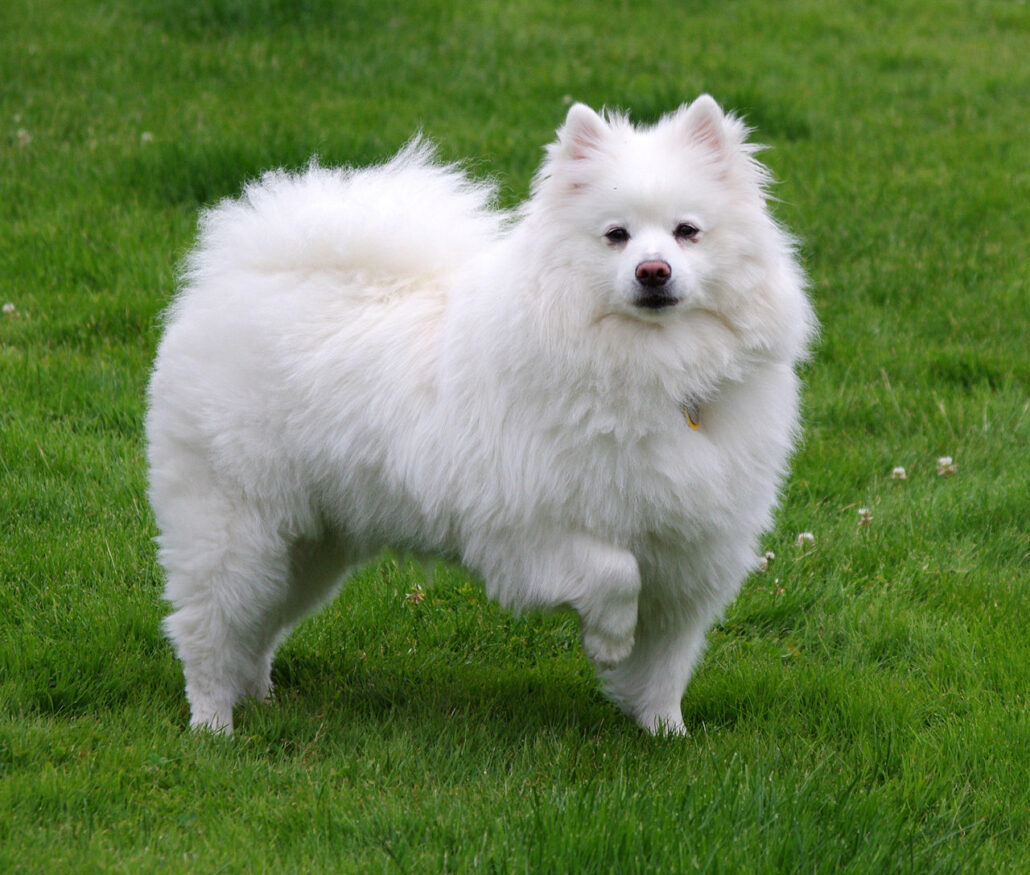
The American Eskimo Dog is also a breed of household dog developed in the United States.
It is a medium-sized, spitz-type breed with a thick, double coat, which is typically white, cream, or biscuit in colour. It is a smart, enthusiastic, and active breed that is used as a human companion.
36. American Toad
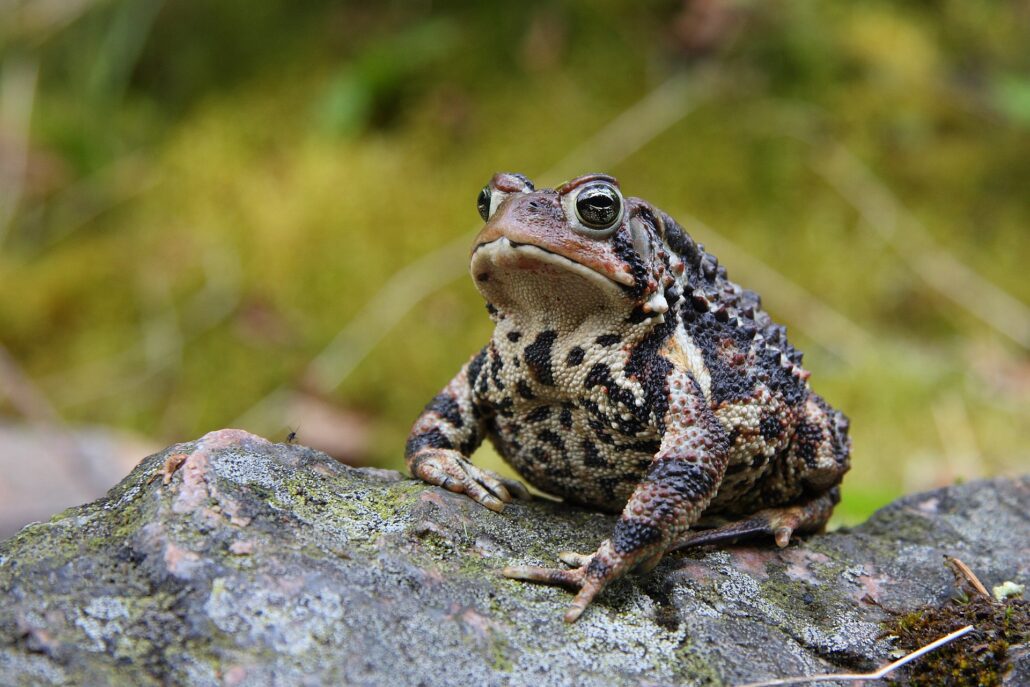
The American toad is a species of toad found in the United States and Canada. It is a small to medium-sized amphibian with warty, dry skin and a short, stocky body.
The American toad is generally brown or green with dark spots on its back. It has large, protruding eyes and a round, bumpy parotoid gland behind each eye.
American toads are found in a variety of habitats, including forests, fields, and gardens. They are nocturnal animals and feed on insects, worms, and other small invertebrates.
37. Amur Leopard
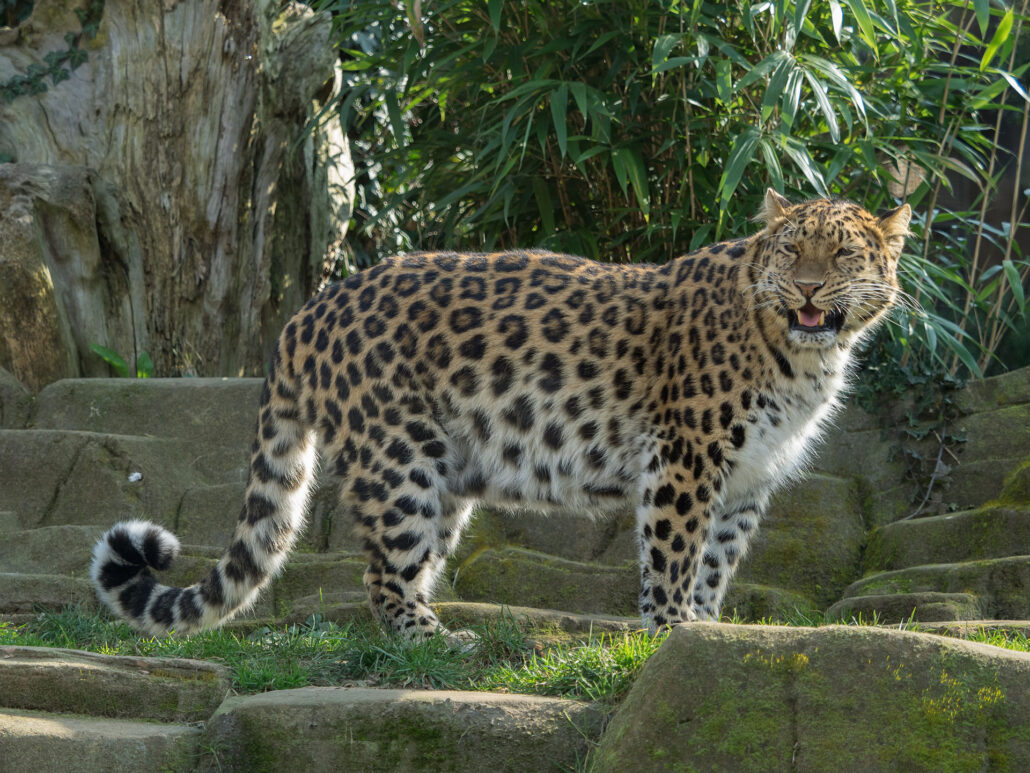
The Amur leopard is a critically endangered subspecies of leopards found in the Russian Far East and Northeast China.
It is a medium-sized, carnivorous mammal with a long, thick coat, which is typically pale yellow to reddish-brown with black spots and rosettes.
The Amur leopard has a small, compact head, small, round ears, and a long, thick tail. It is a solitary and elusive animal and is known for its excellent climbing ability.
The Amur leopard is threatened by habitat loss, poaching, and conflict with humans.
38. Anchovies
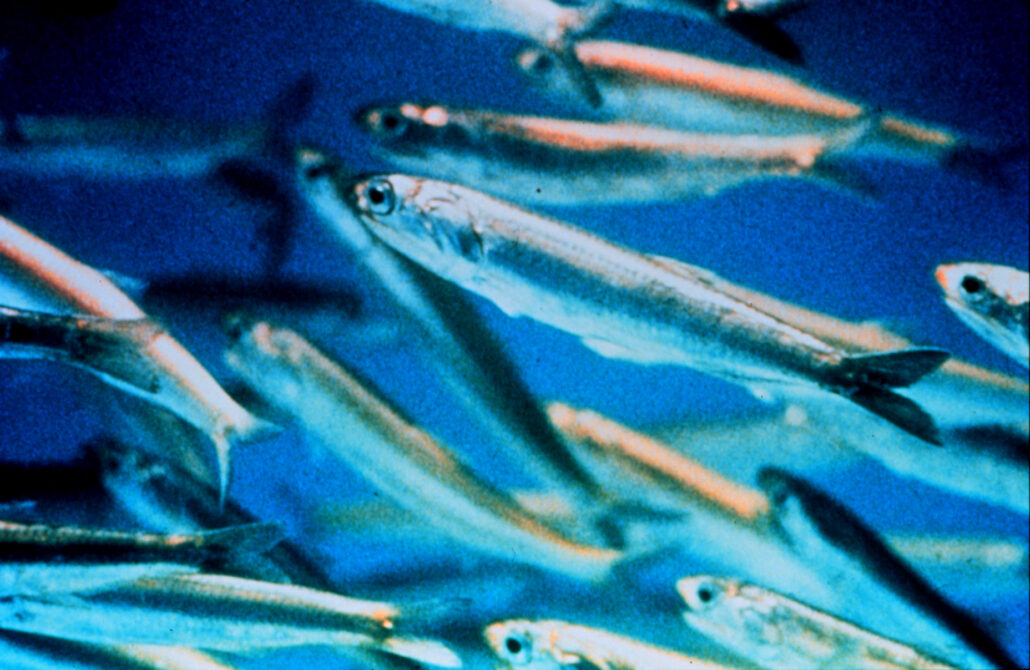
Anchovies are small, saltwater fish found in the Mediterranean Sea and the eastern Atlantic Ocean. They are silvery in colour and have long, slender bodies, small heads, and pointed snouts.
Anchovies are generally found in shallow waters near the coast. They feed on small planktonic organisms and are an important food source for larger fish and birds.
Anchovies are also popular as a food for humans and are often used in salads, pasta dishes, and as a topping for pizzas.
39. Anemones
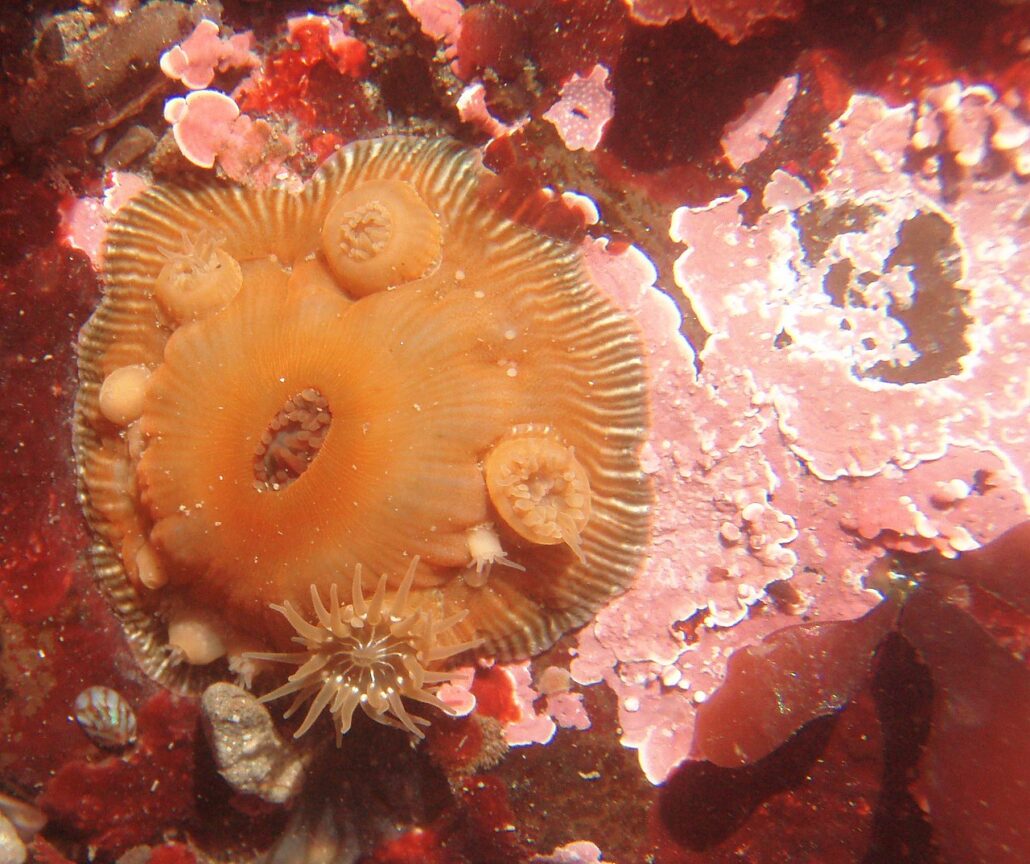
Anemones are a group of marine invertebrates that belong to the phylum Cnidaria. They are known for their colourful, flower-like appearance and their ability to capture and eat small marine animals.
Anemones live in a variety of marine environments, including coral reefs, tidal pools, and the deep sea. They have a soft, flexible body and are attached to the substrate by a disk-like structure called a pedal disc.
Anemones are often found in close association with other marine organisms, such as fish and crabs, and can form symbiotic relationships with them.
40. Angel Sharks

Angel sharks are a group of sharks in the family of Squatinidae. They are named for their flat, wing-like pectoral fins, which give them an “angelic” appearance.
Angel sharks are found in the shallow waters of the Atlantic and Pacific Oceans and are generally found near the bottom. They have a long, slender body, a triangular head, and a wide, flat snout.
Angel sharks are generally sandy or brown in colour and have a pattern of dark spots or stripes on their body. They are opportunistic predators and will eat a variety of small fish and invertebrates.
Angel sharks are vulnerable to overfishing and habitat destruction and are classified as vulnerable or endangered in many parts of their range.
41. Arapaima
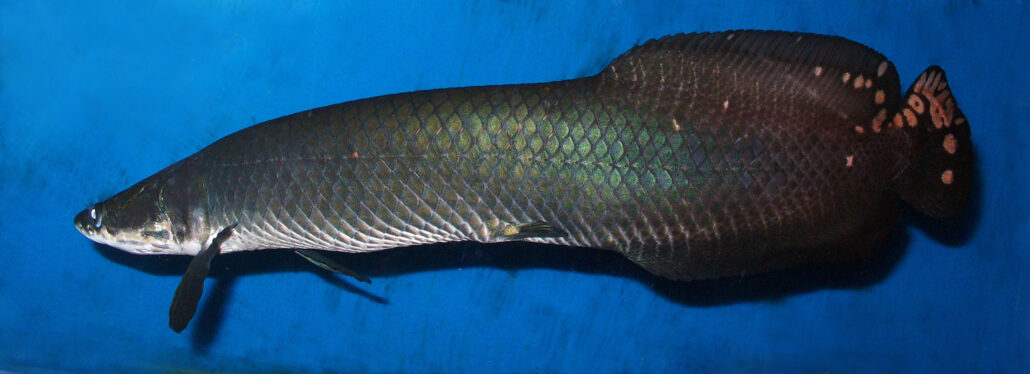
The arapaima (Arapaima gigas) is a large, predatory fish found in the Amazon and Essequibo River basins in South America.
It is one of the largest freshwater fish in the world and can grow up to 10 feet in length and weigh up to 440 pounds.
The arapaima has a long, slim body, a large, triangular head, and a large, protruding lower jaw. It is generally dark grey or brown in colour, with scales that are iridescent green or blue.
The arapaima has a distinctive, bony crest on its head and a large, lung-like organ called a labyrinth organ, which allows it to breathe air and survive in low-oxygen environments.
Arapaima are carnivorous fish and feed on a variety of small fish, invertebrates, and sometimes birds and mammals. They are ambush predators and will lie in wait for their prey before attacking.
42. Auk
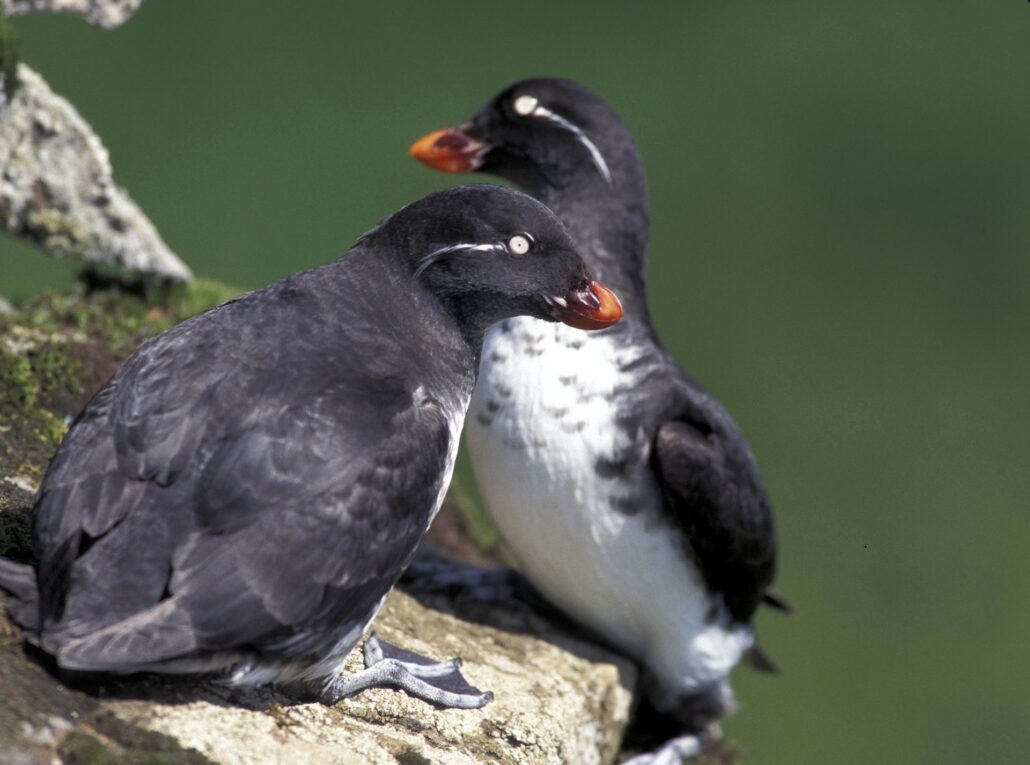
Auk is a common name for a group of seabirds in the family Alcidae. They are characterized by their short wings, thick bills, and webbed feet, which are adapted for swimming and diving.
Auk species are found in a variety of marine environments, including polar regions, coastal waters, and offshore islands. They are generally small to medium-sized birds and are mostly black, white, or grey in colour.
Auk species are known for their loud, distinctive calls and are often found in large colonies. They feed on a variety of small marine animals, such as fish, squid, and crustaceans.
43. Aurochs
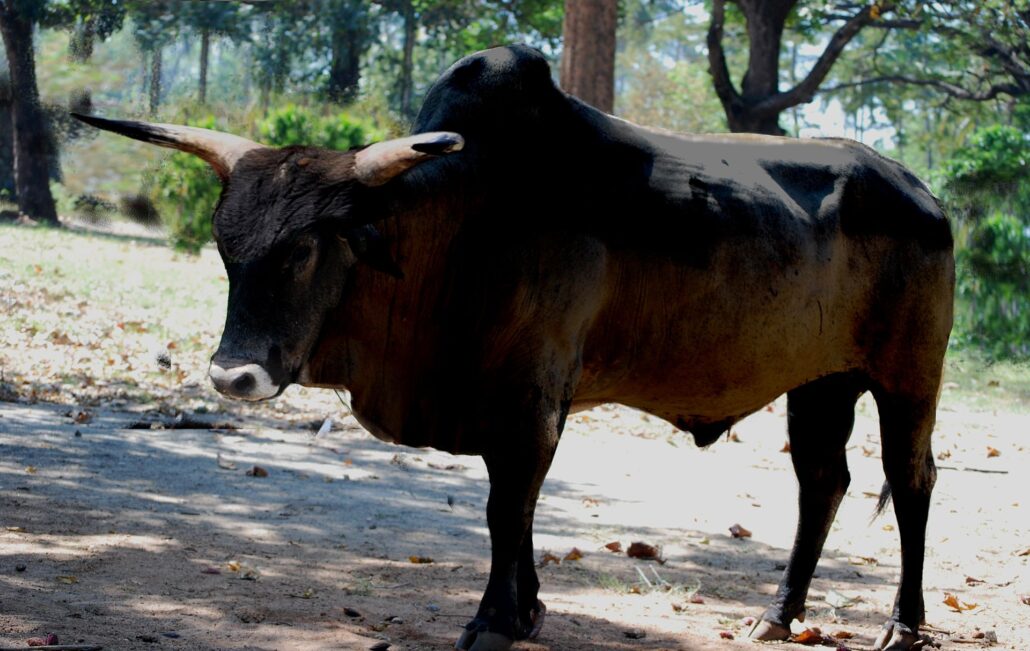
The aurochs (Bos primigenius) was a large, wild cattle species that was once found across much of Europe, Asia, and North Africa.
It is believed to be the ancestor of domestic cattle and is known for its long, curved horns and shaggy, black coat.
The aurochs was a formidable animal and was an important source of food, hide, and bone for early humans. The last known aurochs died in Poland in 1627, and the species is now extinct.
44. Aussiedoodle
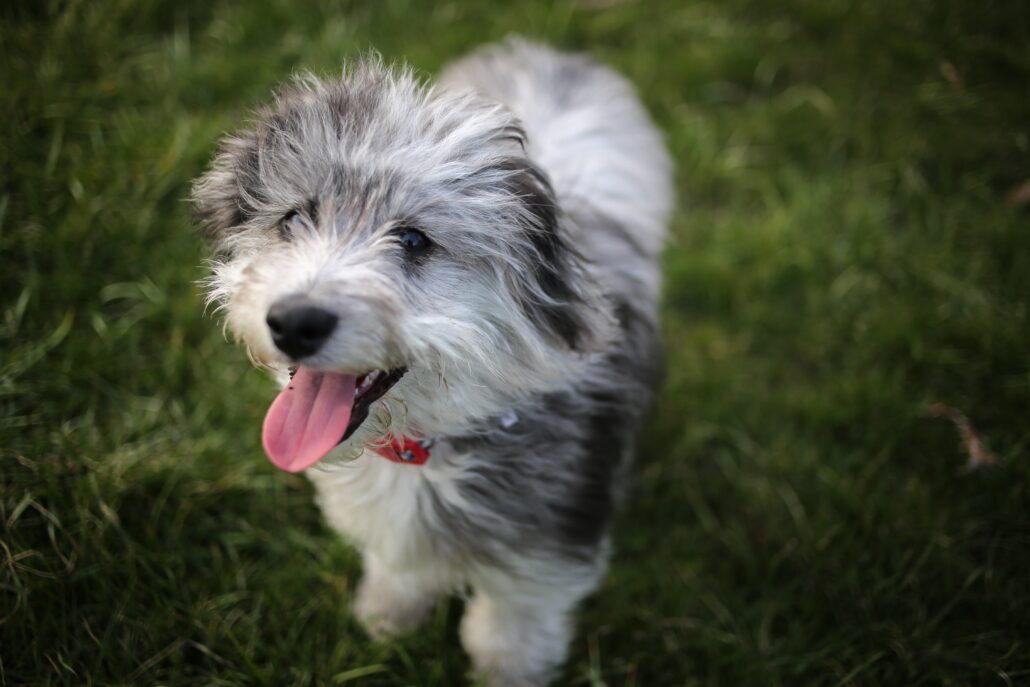
The Aussiedoodle is a hybrid breed of dog created by crossing an Australian shepherd with a standard poodle.
It is a medium to large-sized breed with a thick, wavy or curly coat, which can be any colour. The Aussiedoodle has a medium-sized head, small, triangular ears, and a medium-length tail.
It is an intelligent, energetic, and playful breed and is often used as a companion dog.
45. Αvocet
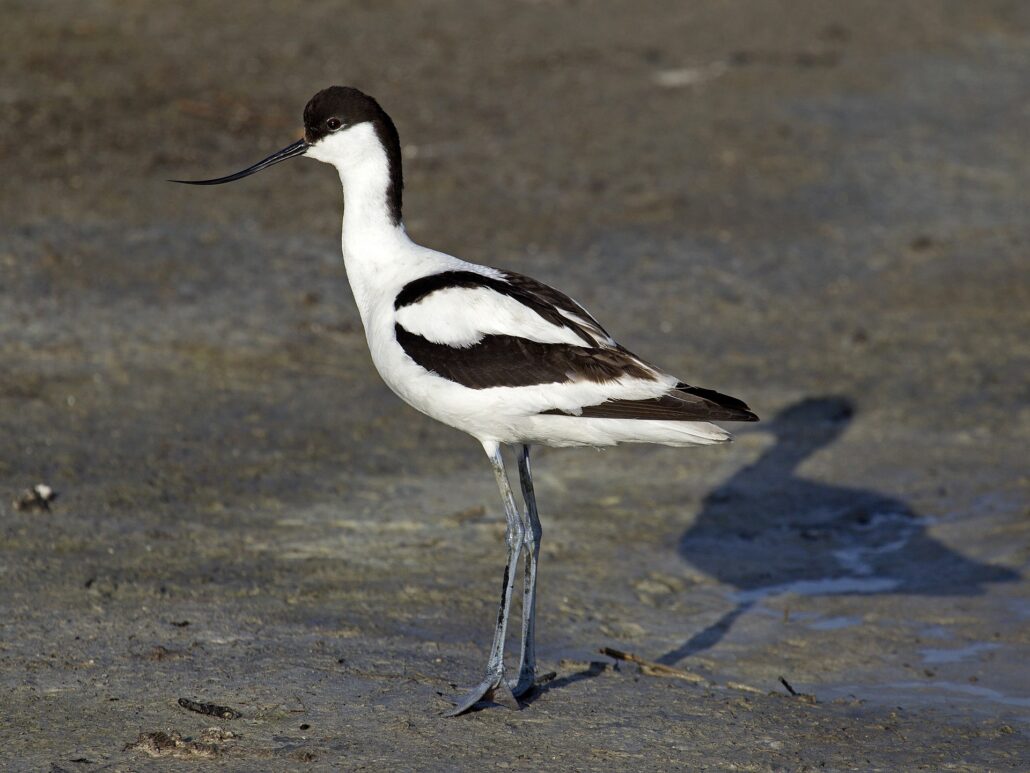
Avocet is a group of wading birds in the family of Recurvirostridae. They are characterized by their long, slender legs, long, thin bills, and distinctive black and white plumage.
Avocet species are found in a variety of wetland habitats, including marshes, lakes, and estuaries.
They are medium to large-sized birds and are generally white or pale grey in colour, with black wings and tail.
Avocets are known for their distinctive, upcurved bills, which they use to sift through mud and shallow water for small invertebrates and seeds.
They are often found in large flocks and are known for their elegant, graceful movements as they forage for food.
Avocets are found in many parts of the world, including North and South America, Europe, Asia, and Africa.
Some species are migratory and will travel long distances between their breeding and wintering grounds.
Avocets are generally not threatened, but some species have declining populations due to habitat loss and human disturbance.
46. Axolotl
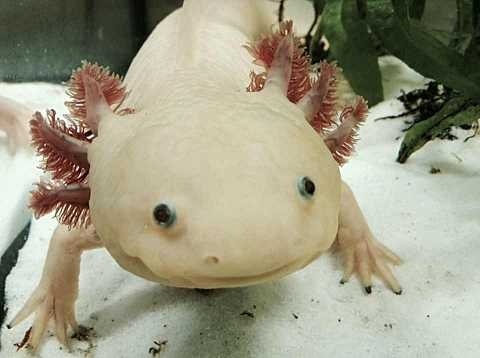
The axolotl (Ambystoma mexicanum) is a species of salamander found in the lakes and canals of central Mexico. It is a small to medium-sized amphibian with a slender, elongated body and short, frilly gills on the sides of its head.
Axolotls are generally brown or black with dark spots or stripes on their body. They have small, lidless eyes and a wide, toothy mouth.
Axolotls are unique in that they retain their aquatic larval form throughout their lives and do not undergo metamorphosis into adulthood.
They are carnivorous and will eat a variety of small invertebrates, such as worms and insects.
Axolotls are popular as pets and are also used in scientific research due to their ability to regenerate their limbs and other body parts.
47. Aye Aye
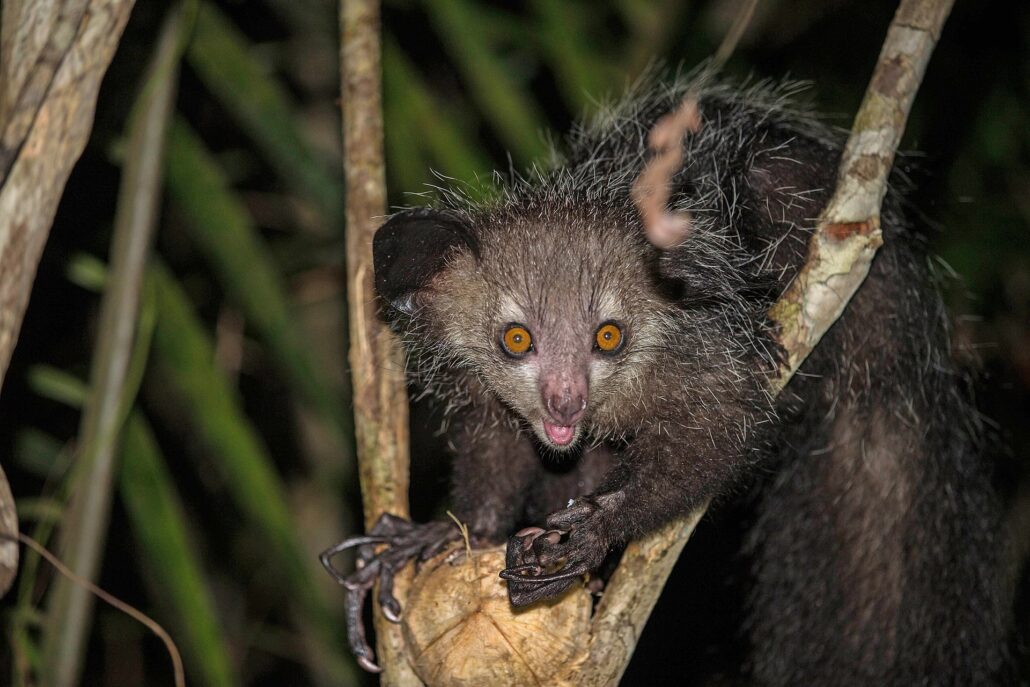
The aye-aye (Daubentonia madagascariensis) is a species of nocturnal lemur found only on the island of Madagascar.
It is a medium-sized, arboreal mammal with a long, thin body, large, pointed ears, and long, thin fingers. Aye-ayes are brown or black, with a bushy, grizzled tail.
They are known for their distinctive, long, middle finger, which they use to tap on tree trunks and branches to locate insects, which they then extract with their sharp, pointed teeth.
48. Australian Cattle Dog
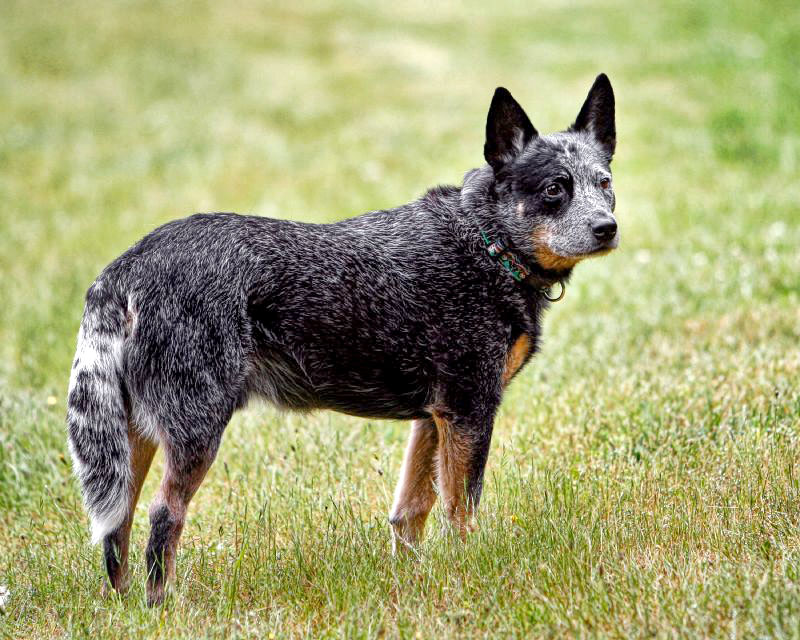
Australian Cattle Dog (also known as the Blue Heeler or the Queensland Heeler) is a breed of herding dog developed in Australia. It is a medium to large-sized breed with a short, smooth coat, which is typically blue or red in colour.
The Australian Cattle Dog has a muscular, athletic build, a medium-sized head, small, triangular ears, and a long, thick tail. It is an intelligent, alert, and energetic breed and is often used for herding and working livestock.
49. Australian Gecko
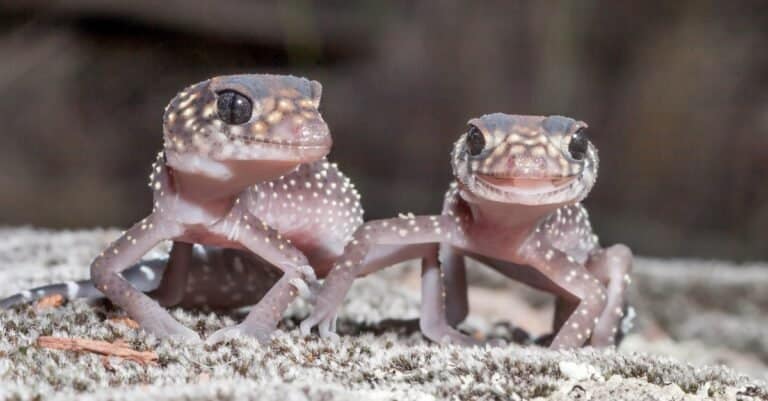
The Australian gecko is a group of gecko species found in Australia and surrounding islands. They are small to medium-sized reptiles with a wide range of colours and patterns, including shades of brown, green, and red.
Australian geckos are found in a variety of habitats, including forests, grasslands, and deserts. They are nocturnal animals and are known for their ability to climb and cling to smooth surfaces using their adhesive toes.
Australian geckos are generally harmless to humans and are popular as pets.
50. Australian Mist
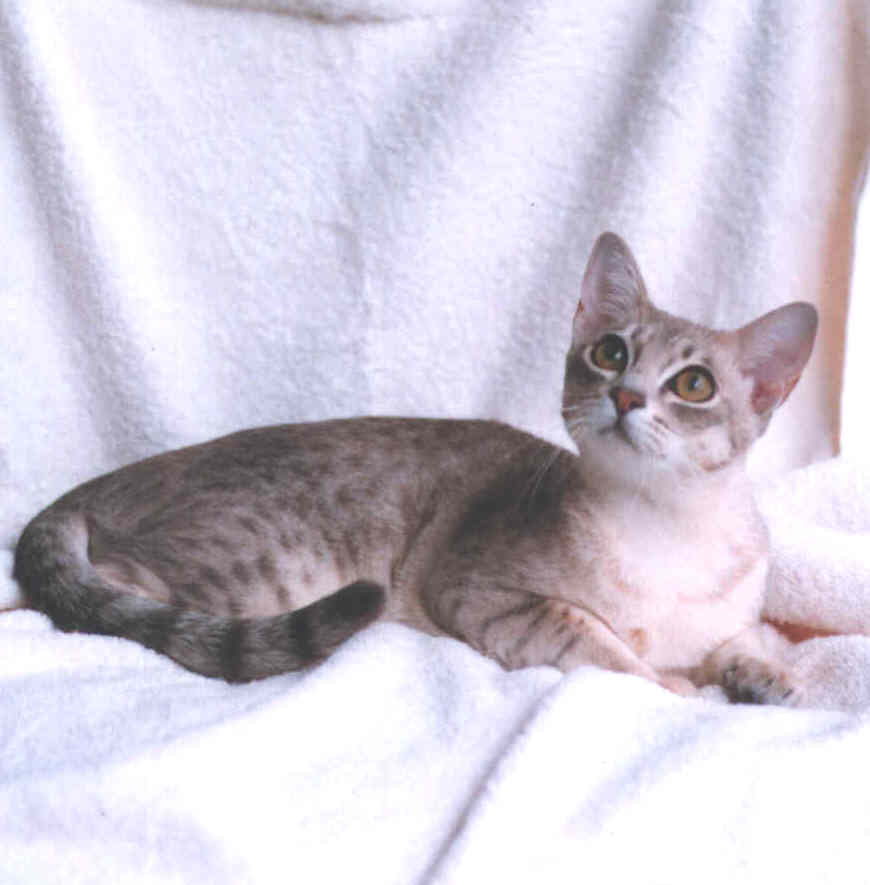
The Australian Mist is a breed of domestic cat developed in Australia. It is a medium-sized, short-haired breed with a wide range of colours and patterns, including shades of brown, blue, and cream.
The Australian Mist has a round head, medium-sized ears, and large, round eyes. It is a friendly, affectionate breed and is known for its adaptability and calm temperament.
51. African Tree Toad
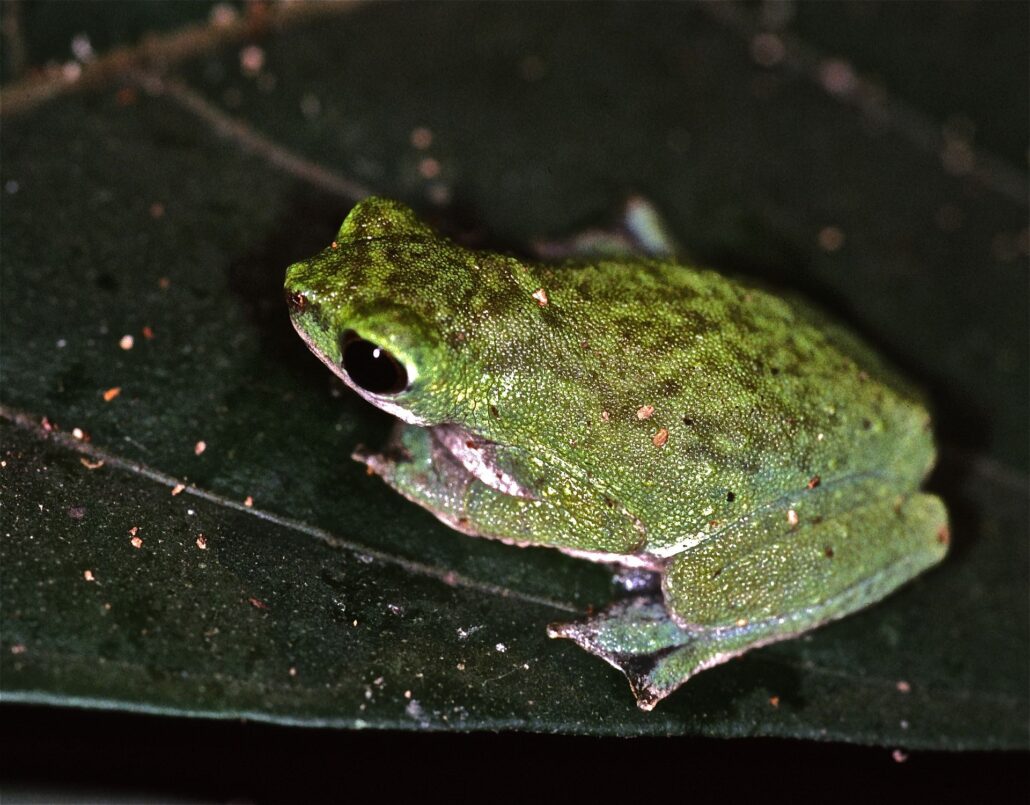
The African tree toad (Leptopelis vermiculatus) is a species of toad found in the forests and savannas of central and western Africa. It is a small to medium-sized amphibian with a warty, dry skin and a short, stocky body.
The African tree toad is generally brown or green in colour, with dark spots on its back. It has large, protruding eyes and a round, bumpy parotoid gland behind each eye.
African tree toads are found in a variety of habitats, including forests, fields, and gardens.
They are nocturnal animals and feed on insects, worms, and other small invertebrates. African tree toads are of interest to some researchers due to their ability to produce toxins that deter predators.
Many animals start with the letter A representing a diverse range of species from various taxonomic groups. In the list above, we tried to include as many as possible.
All the animals on the list are of all shapes and sizes and from all corners of the world.
More animal lists based on letters:

